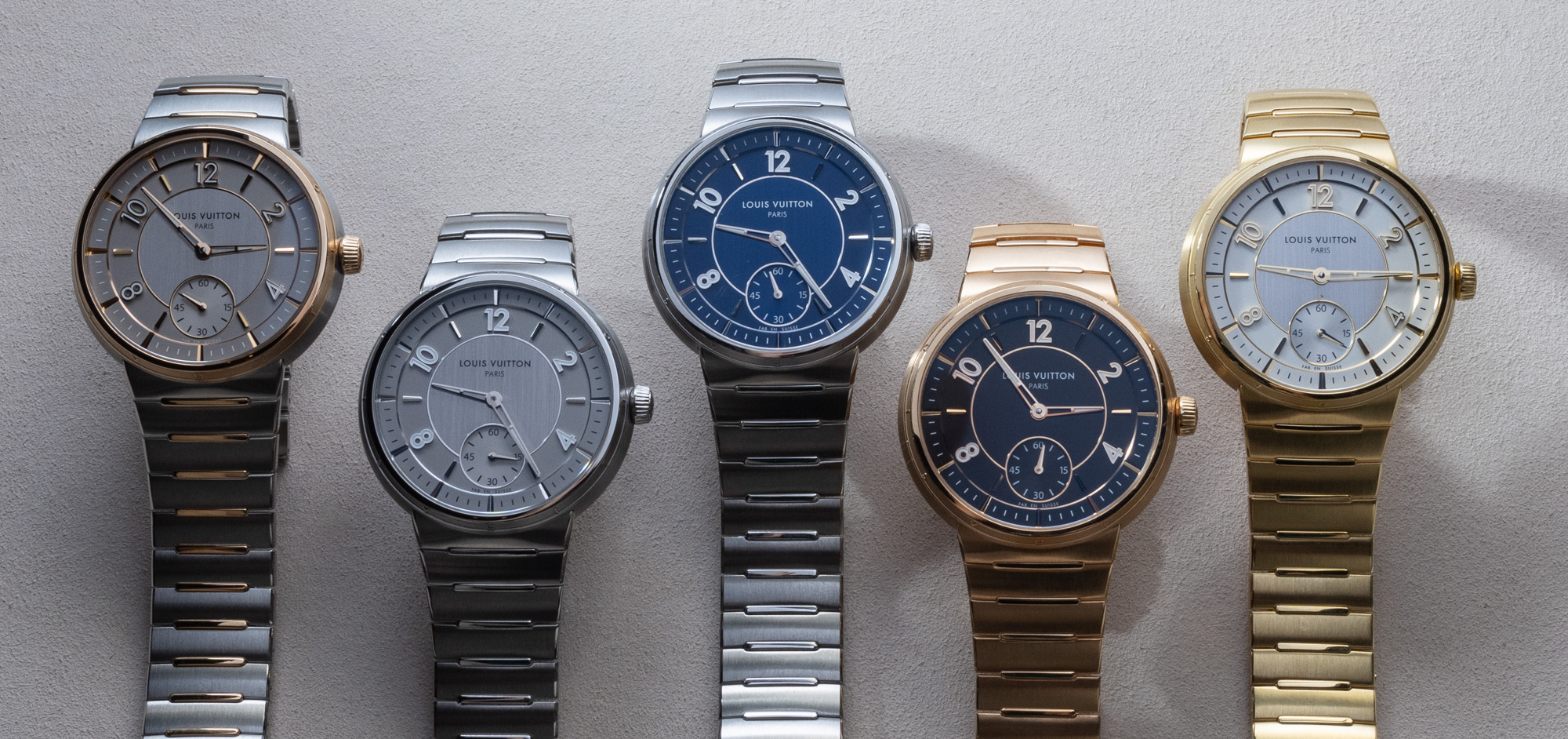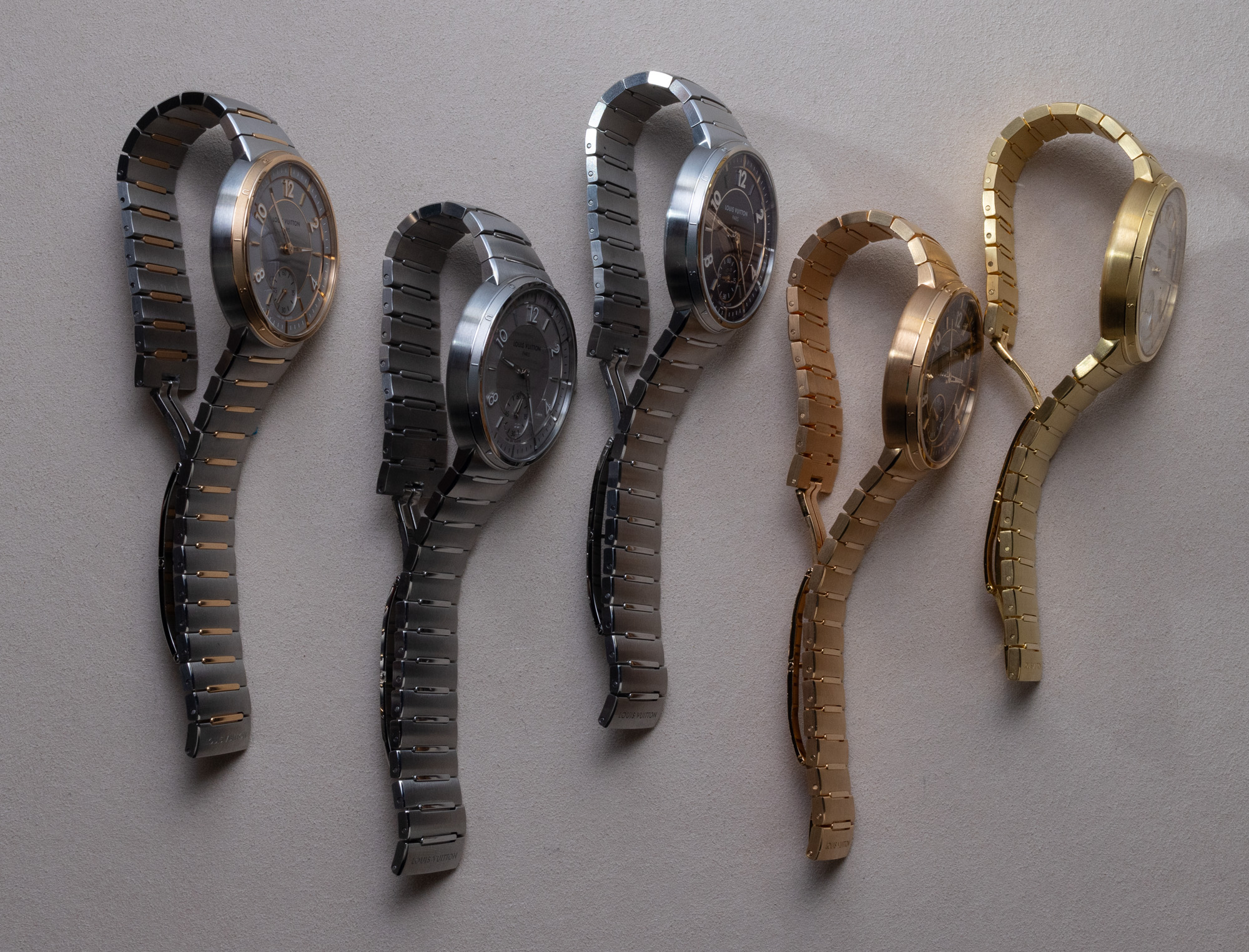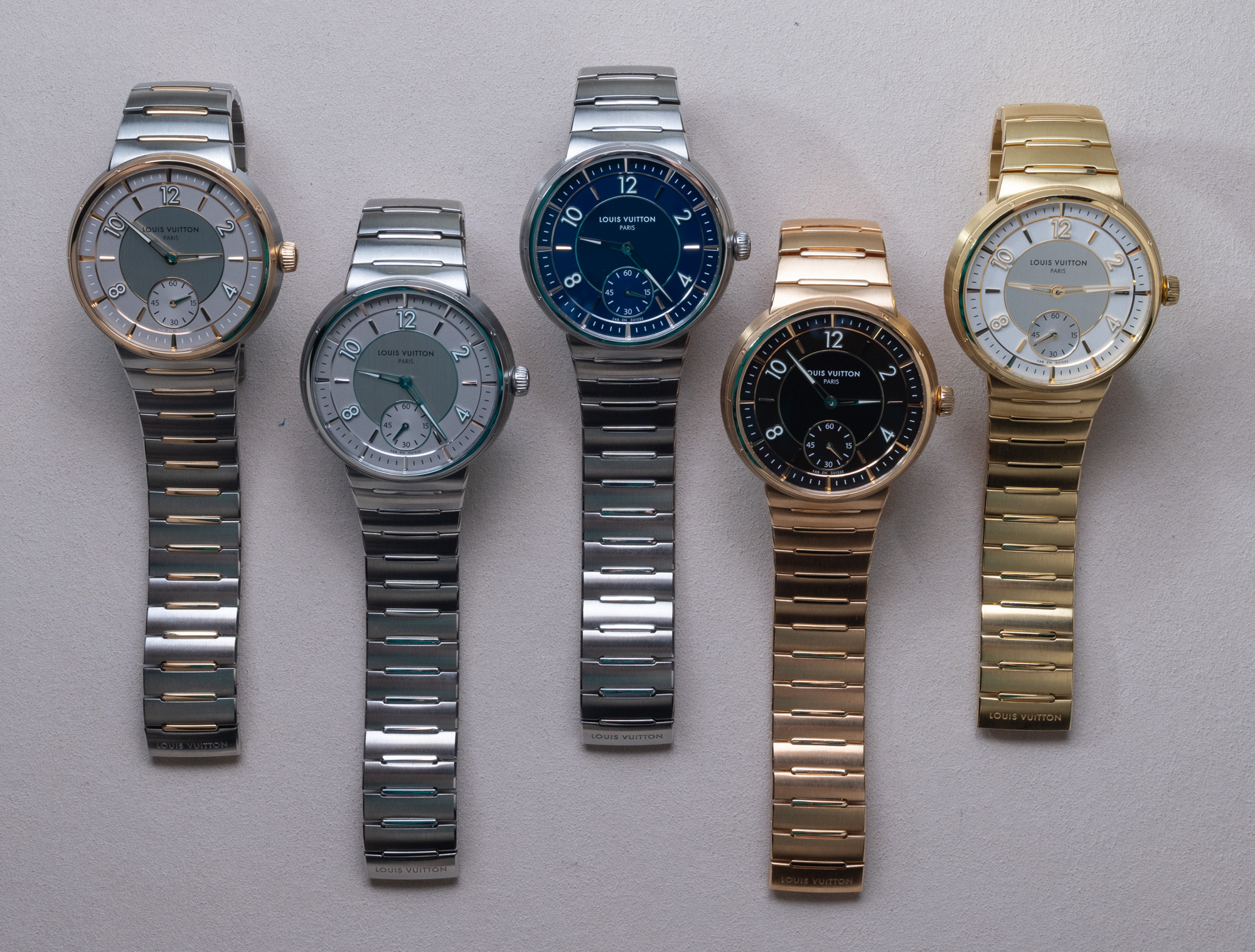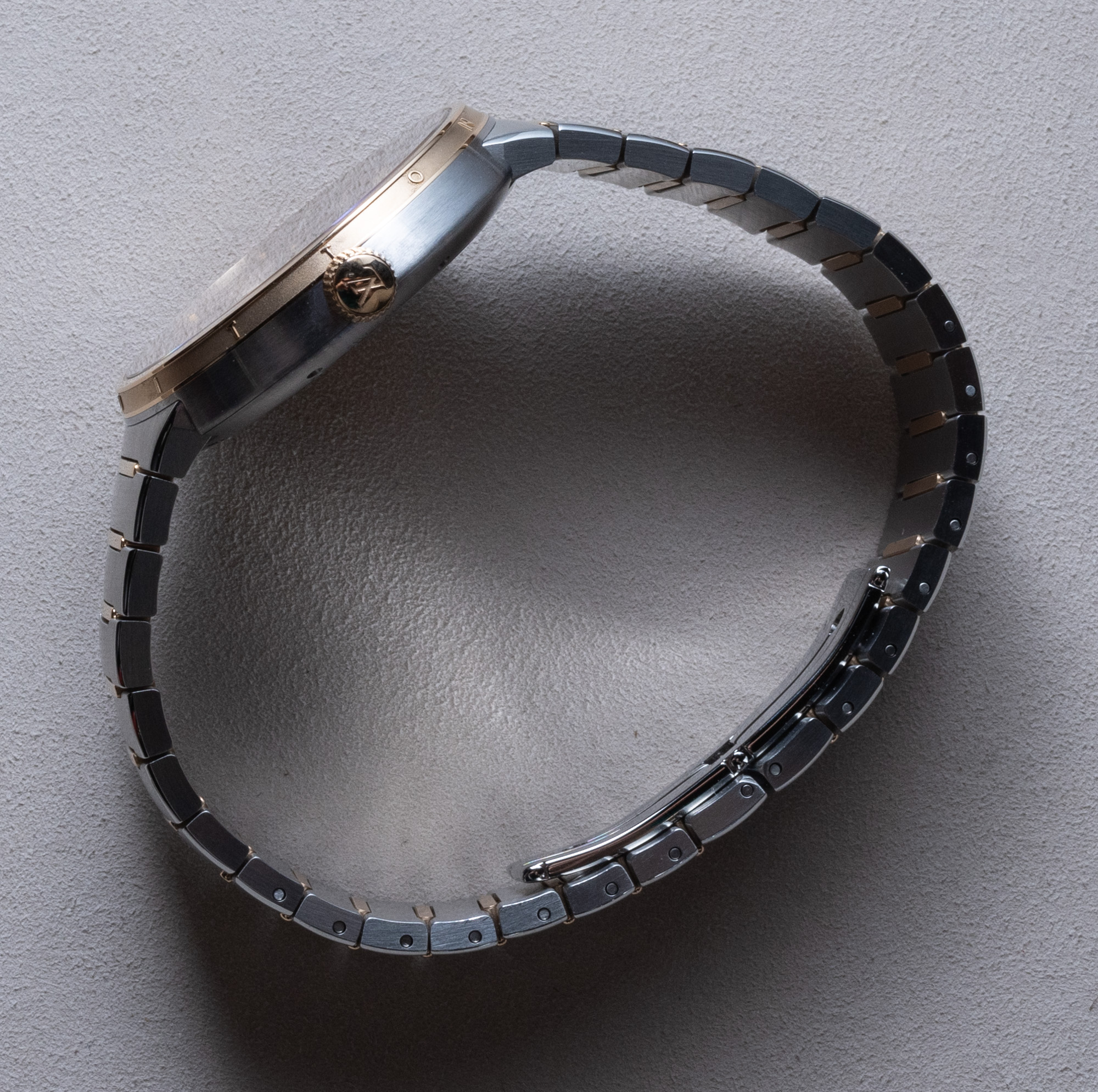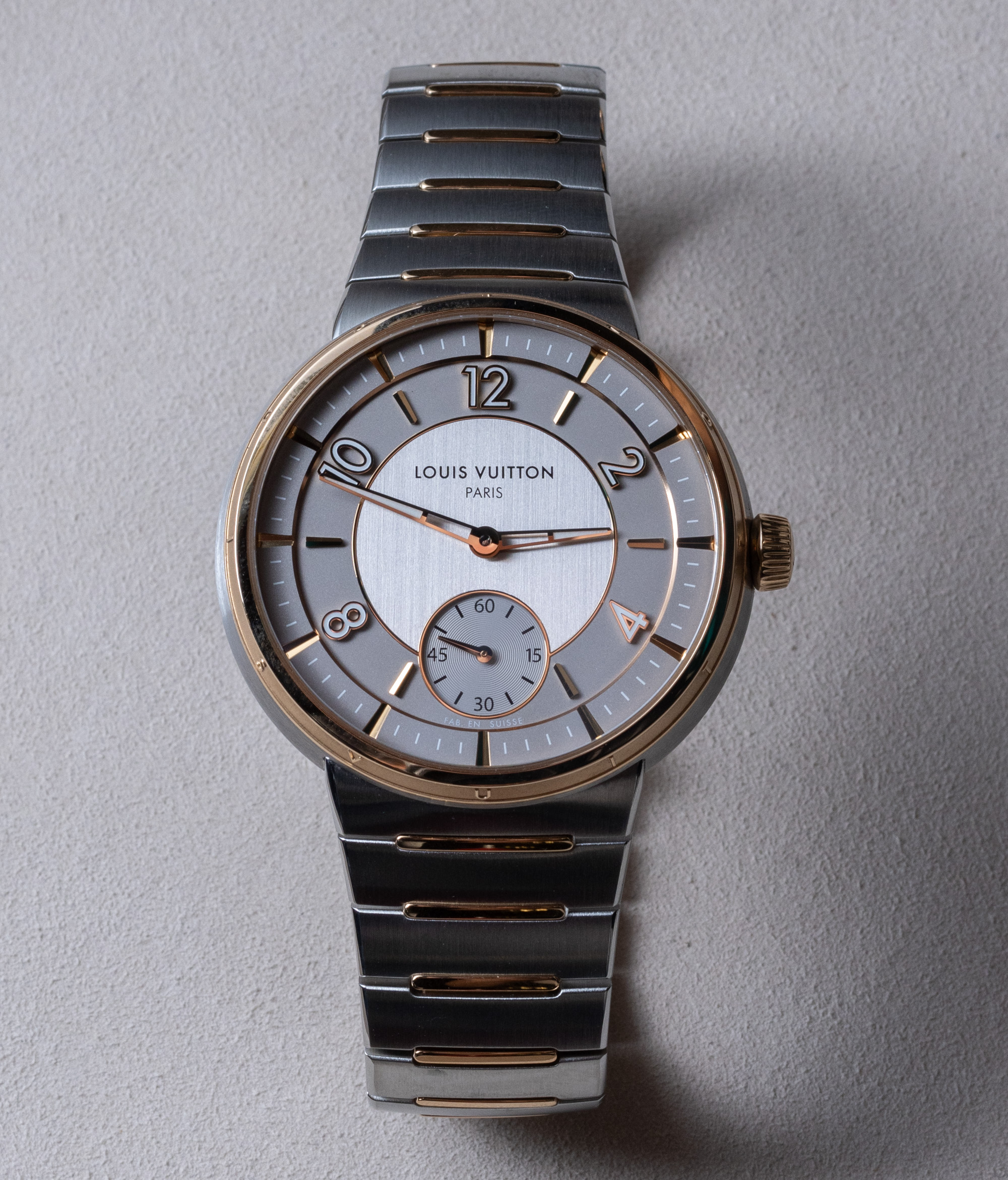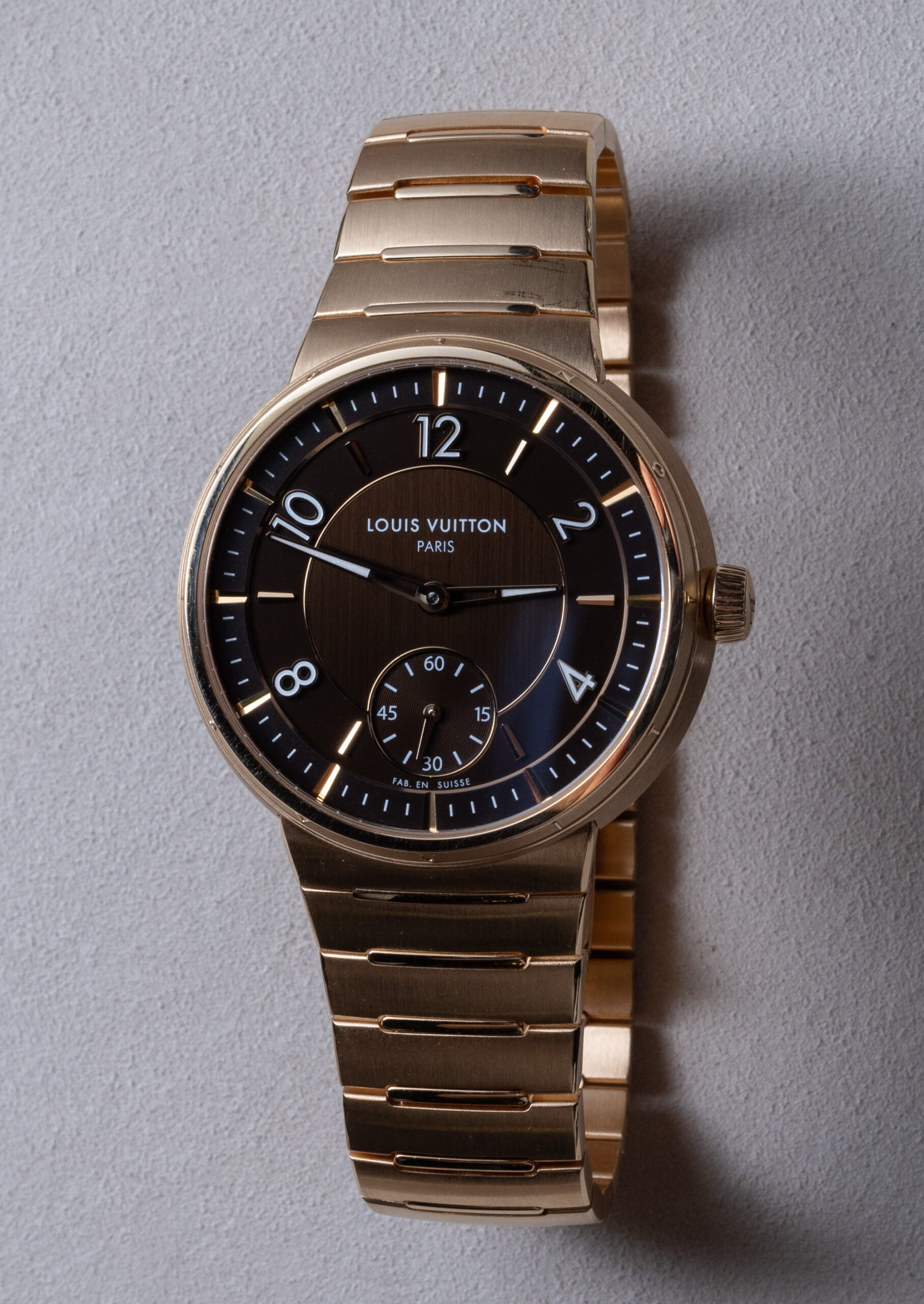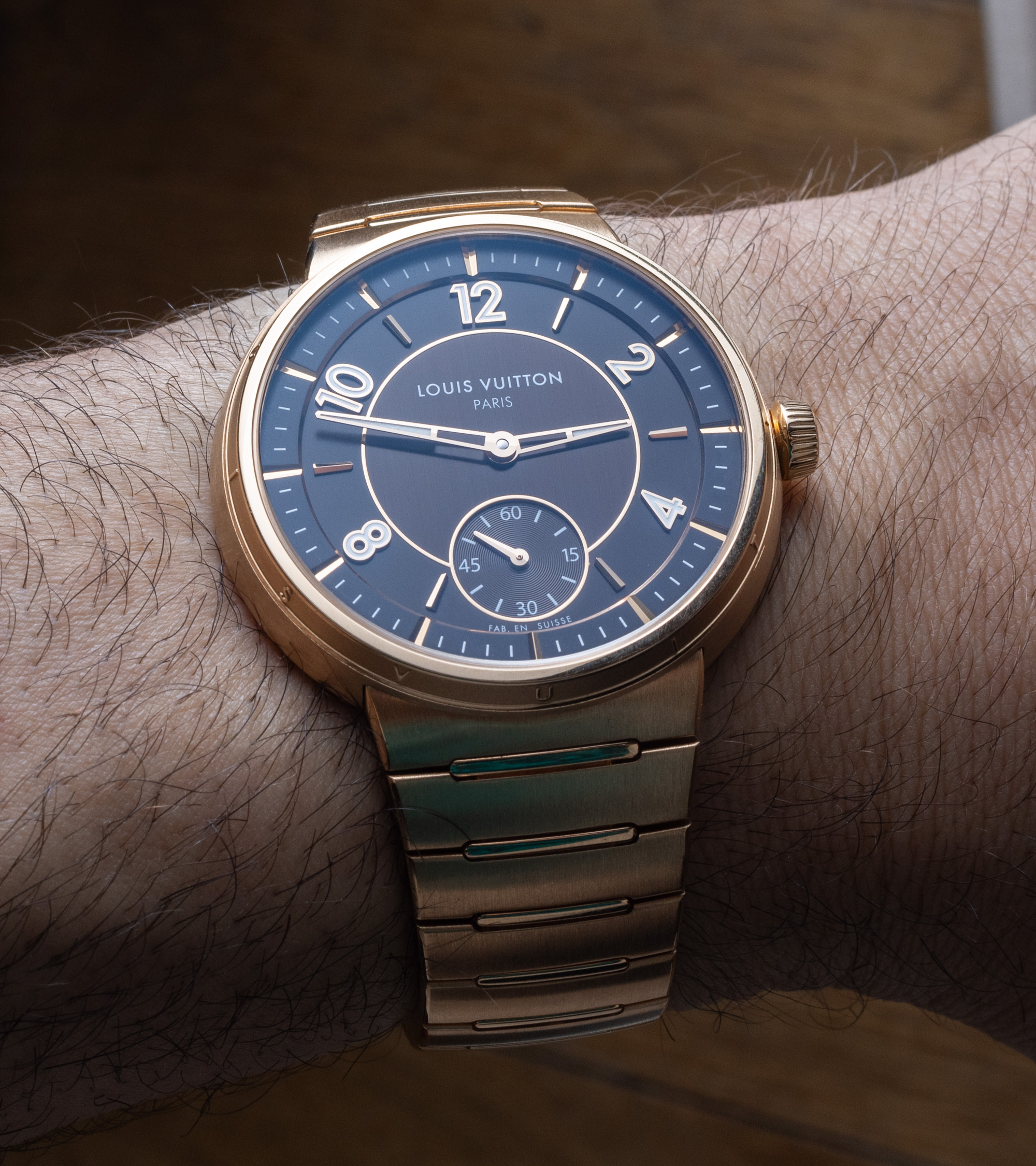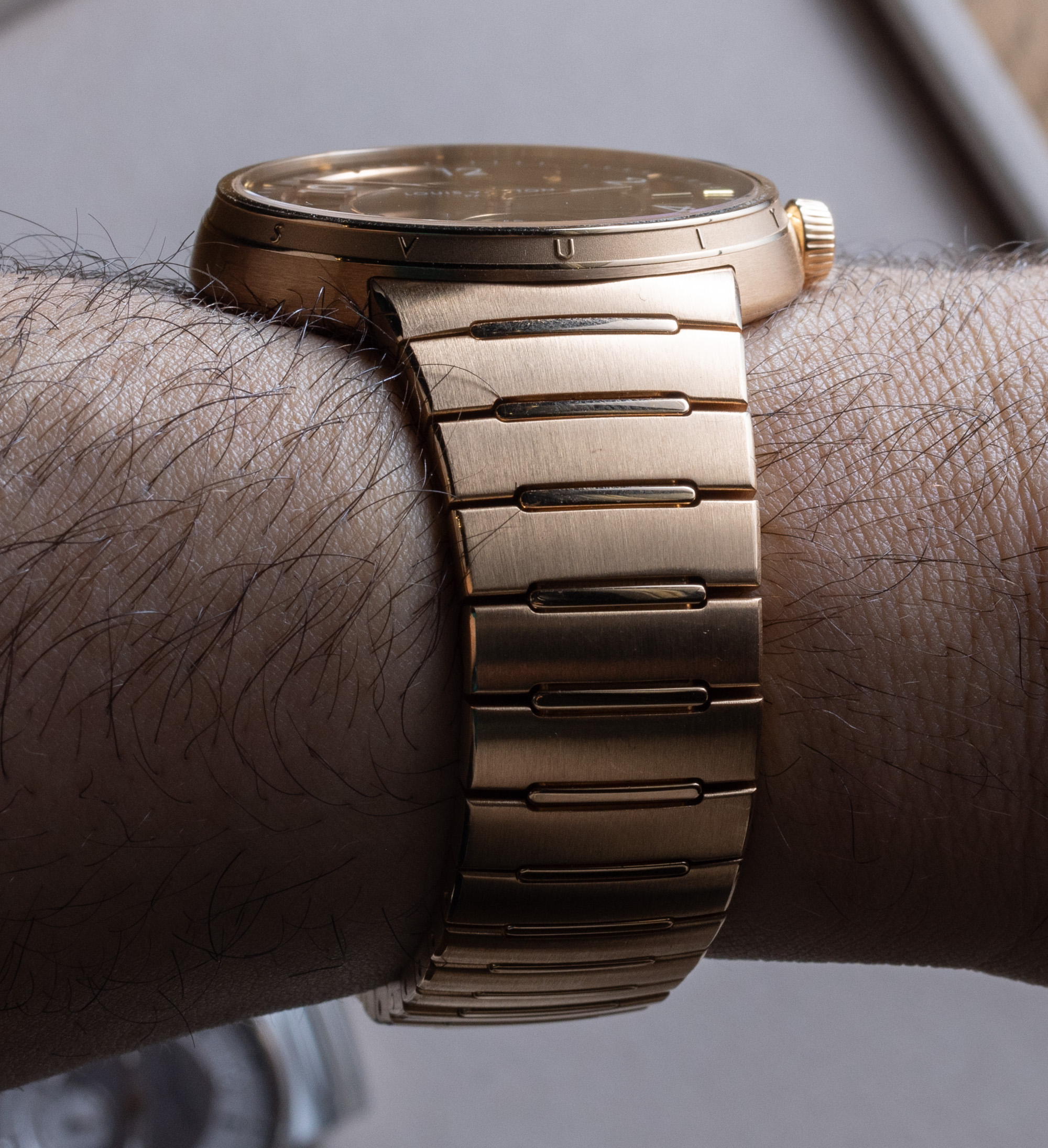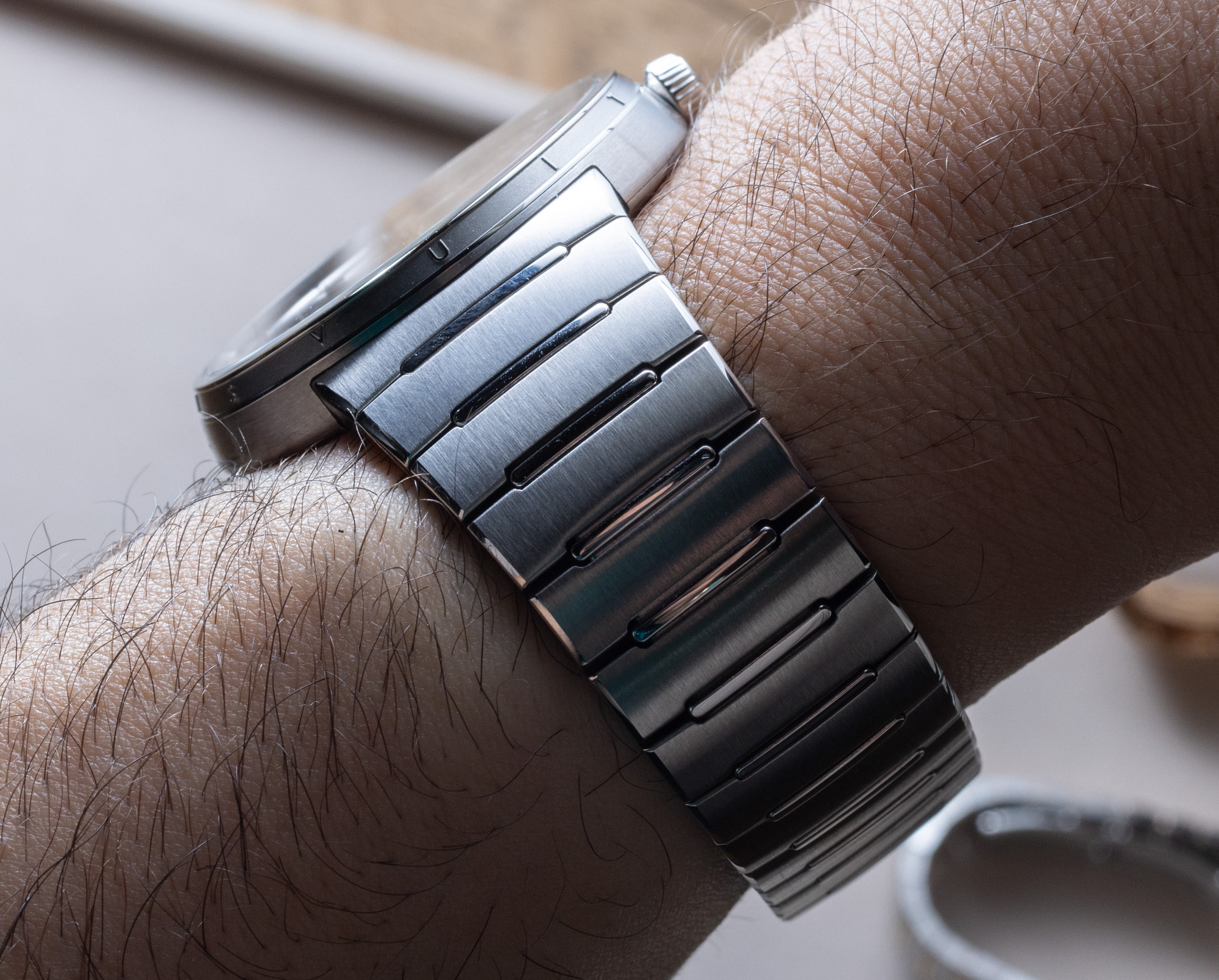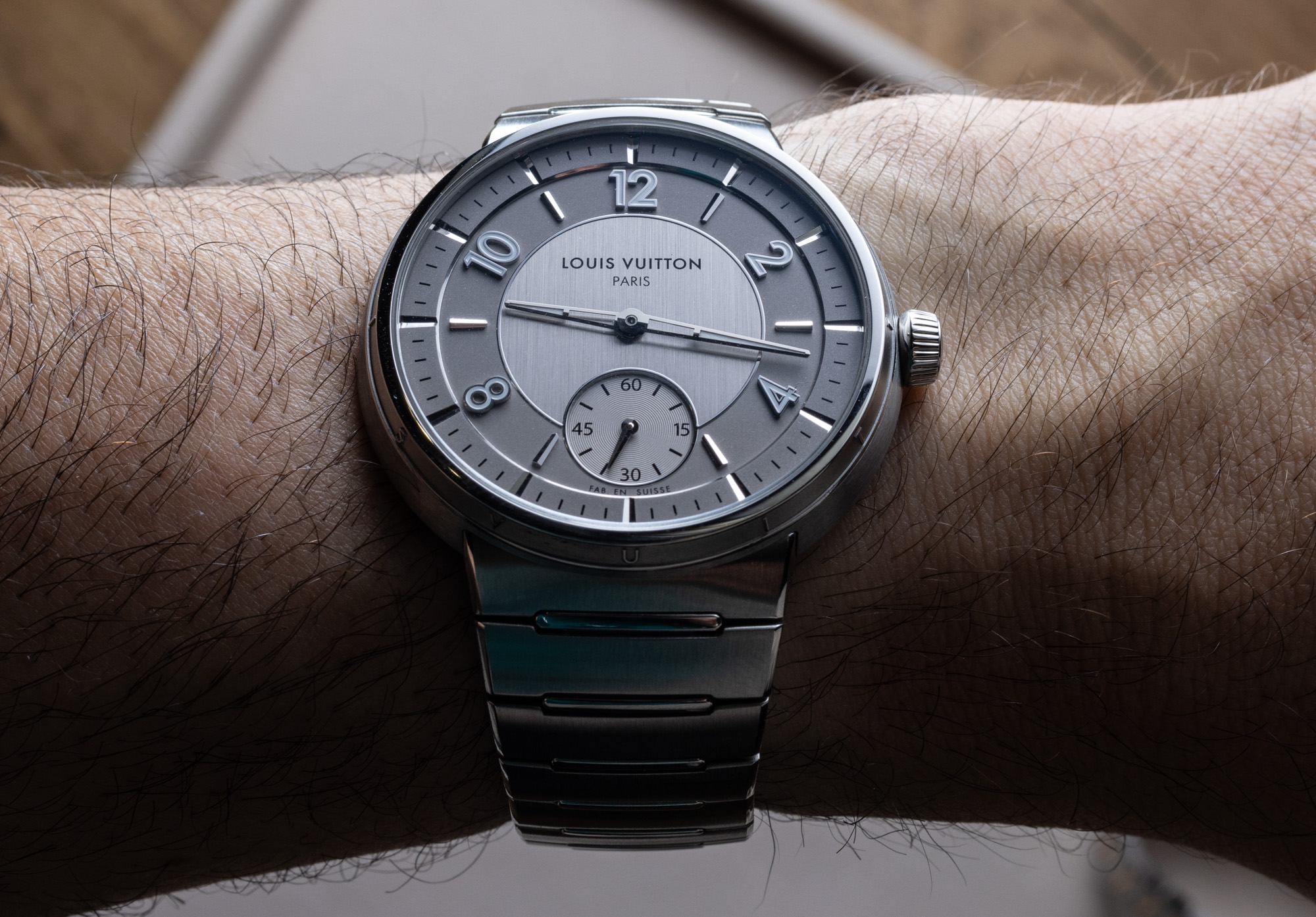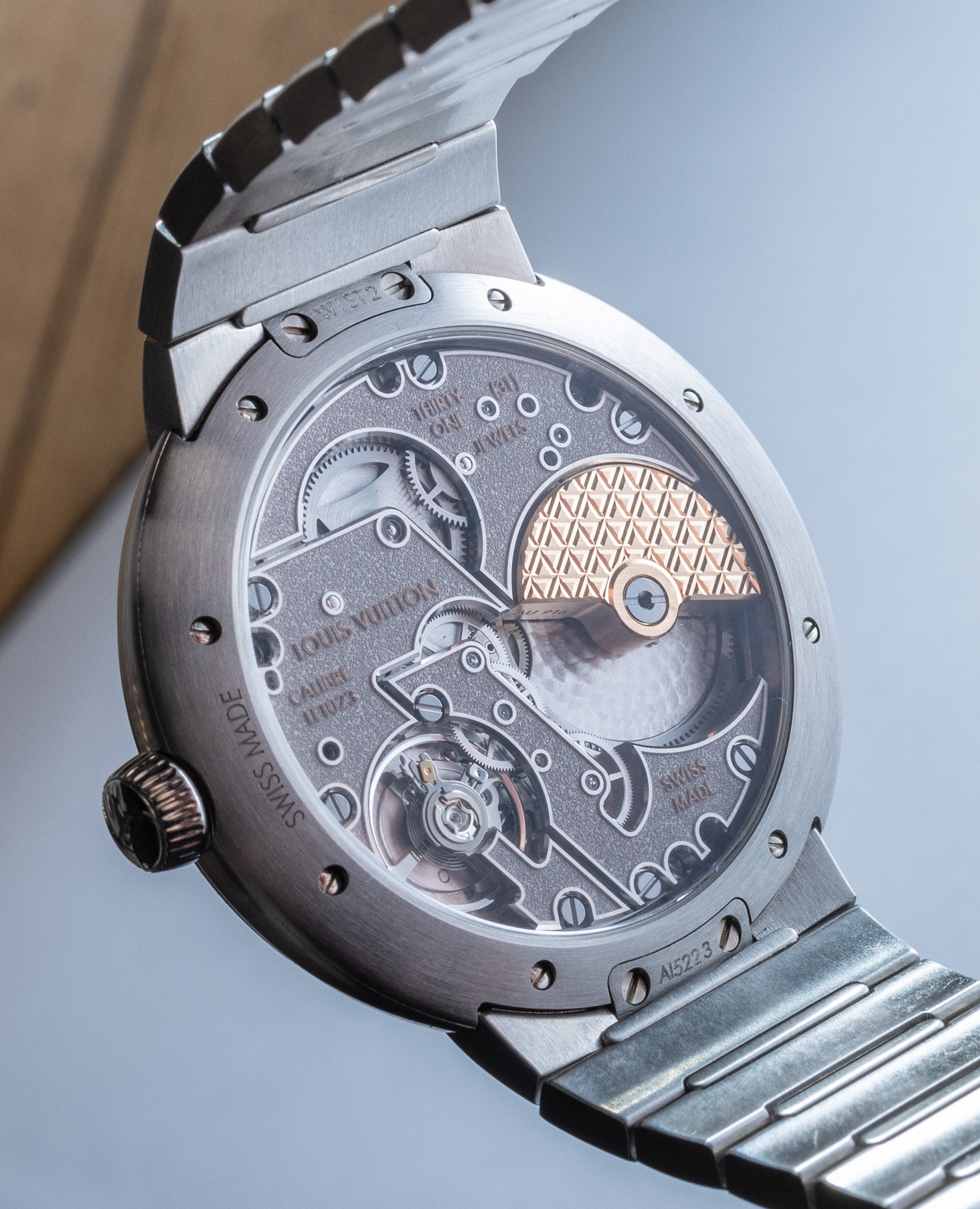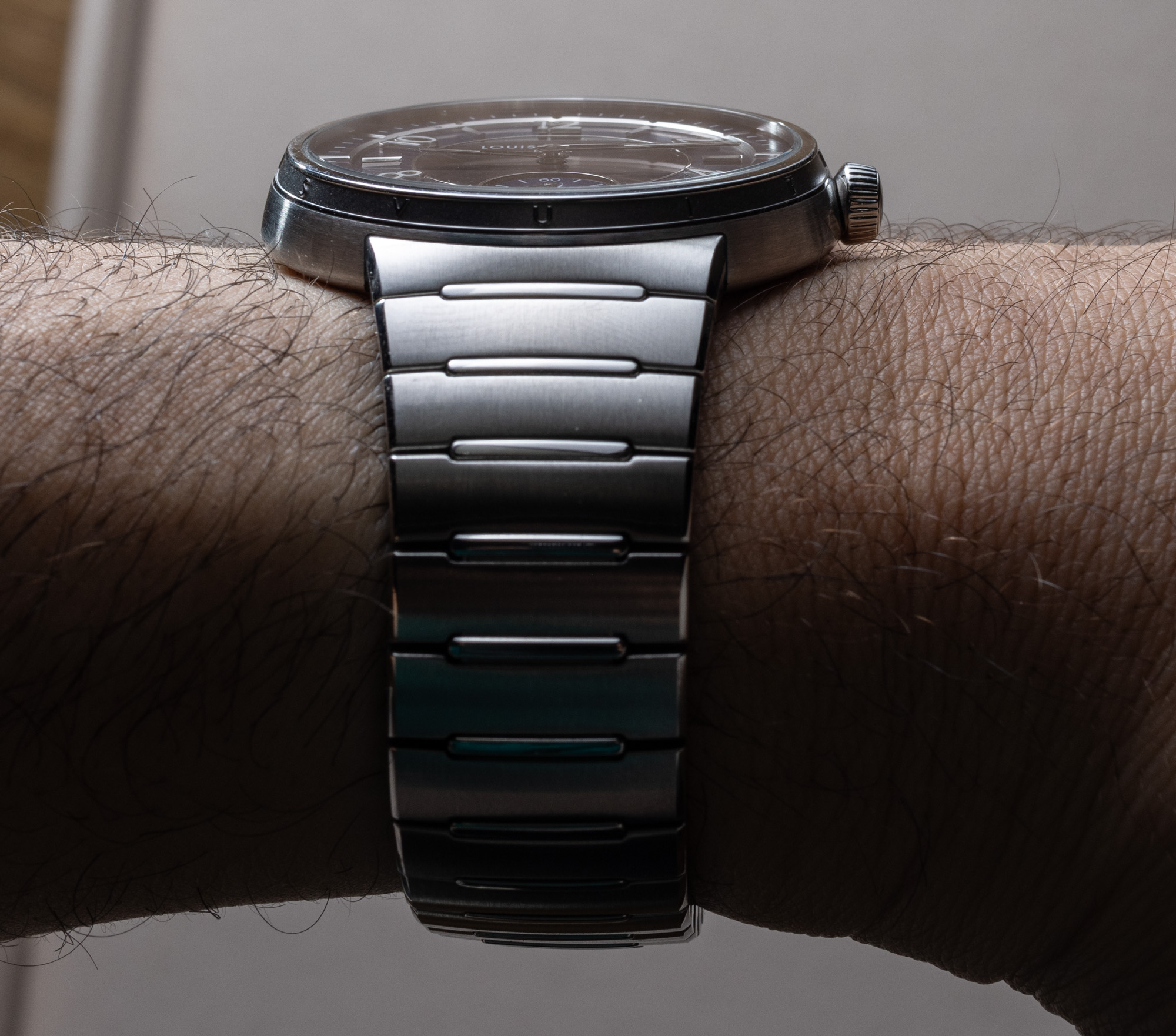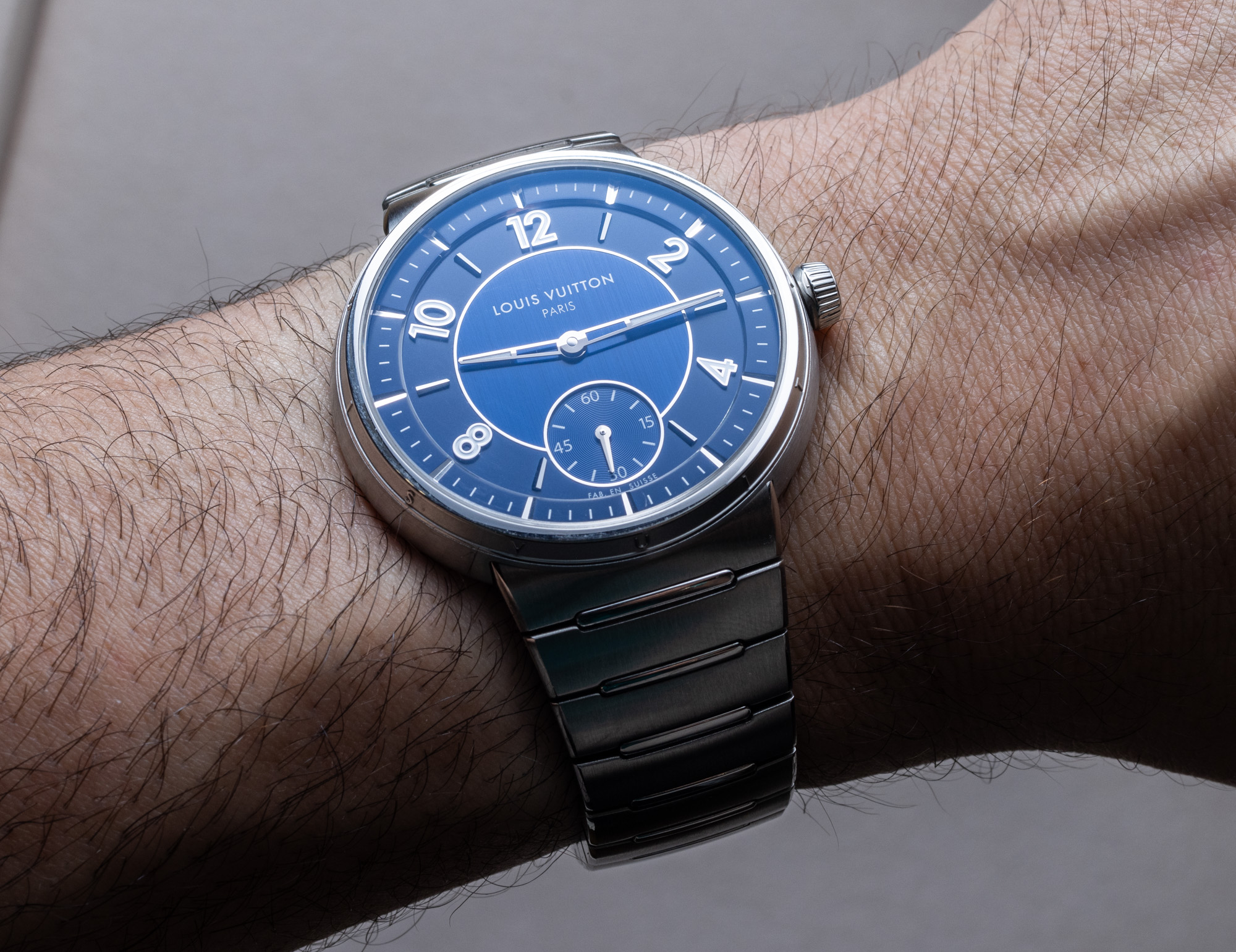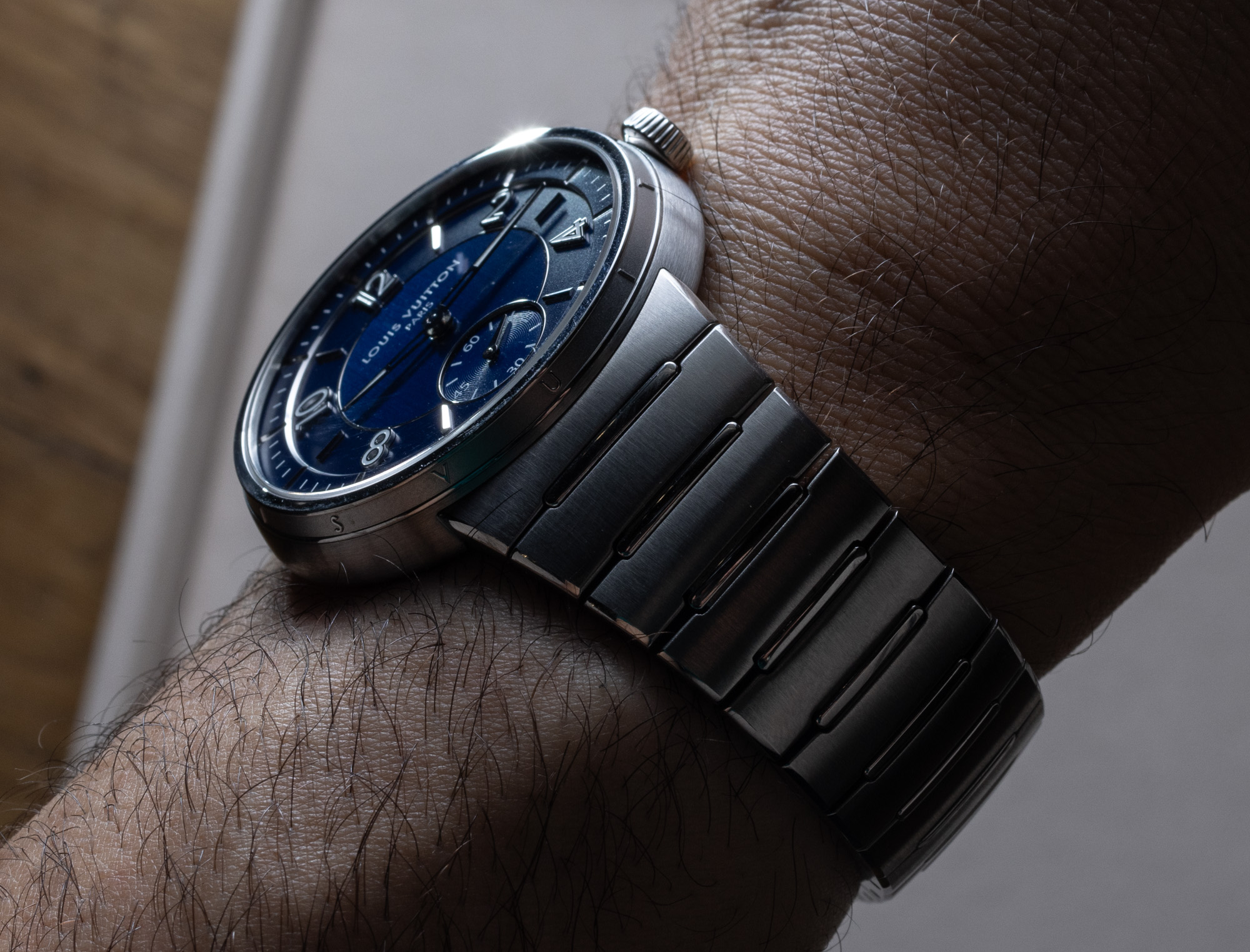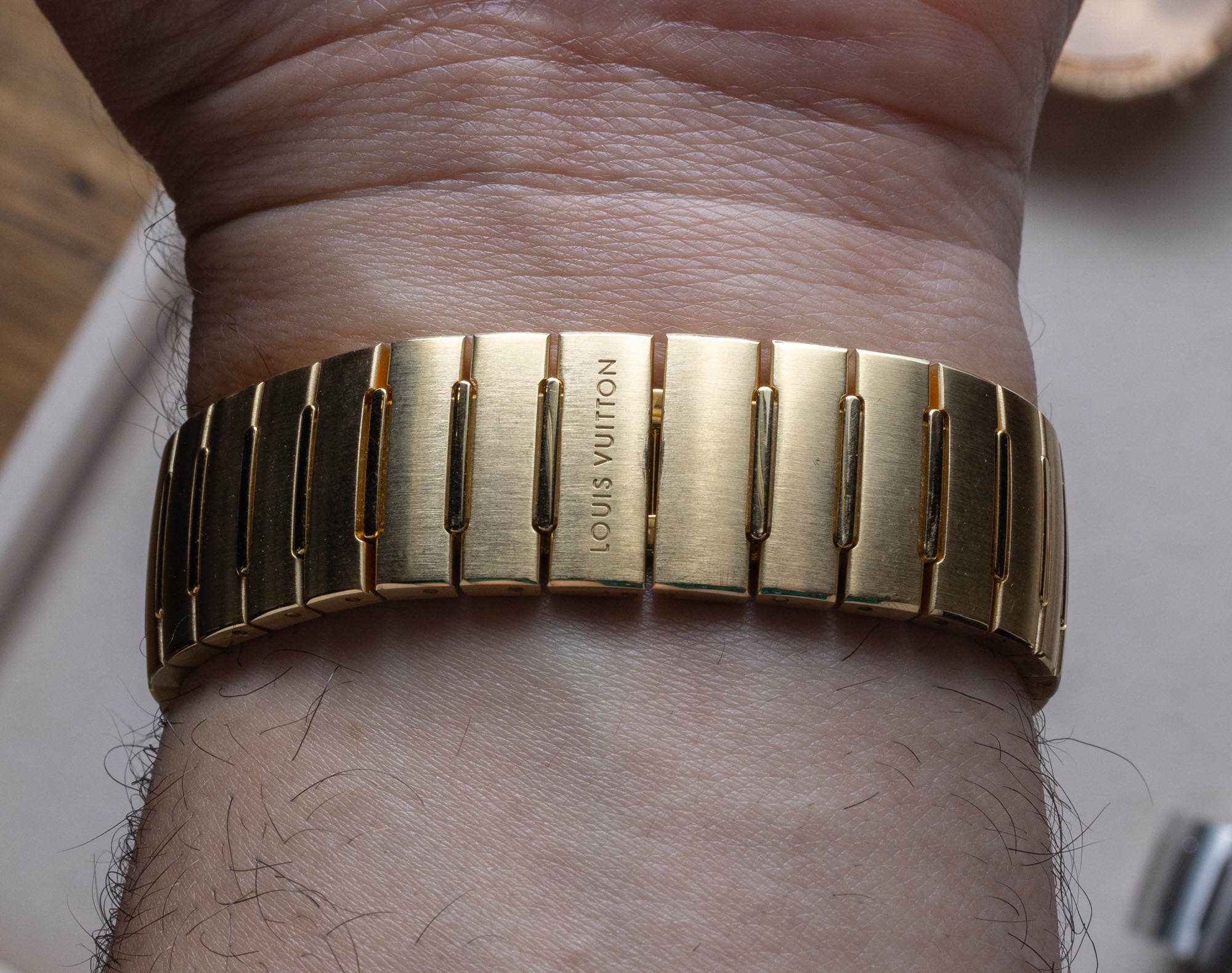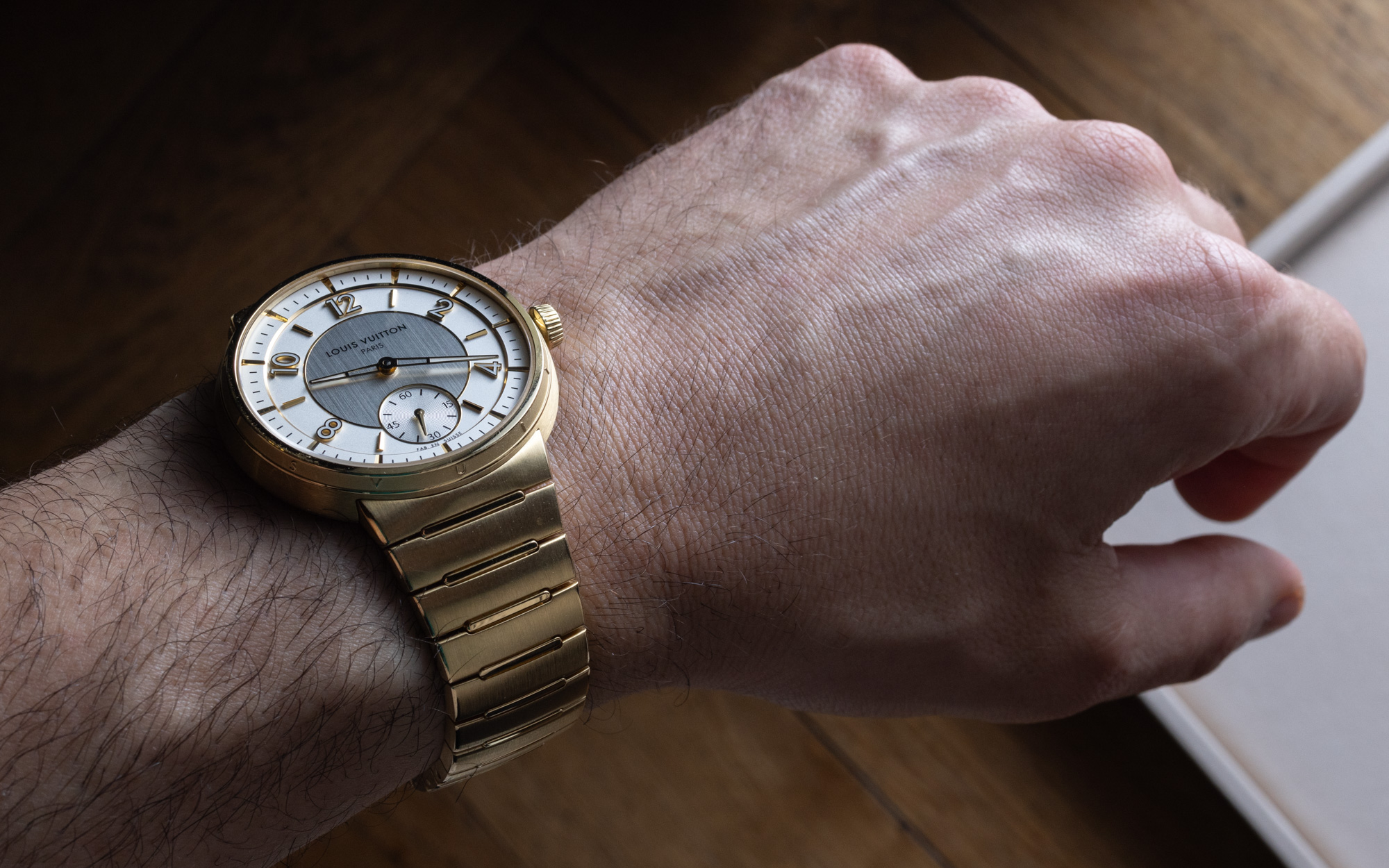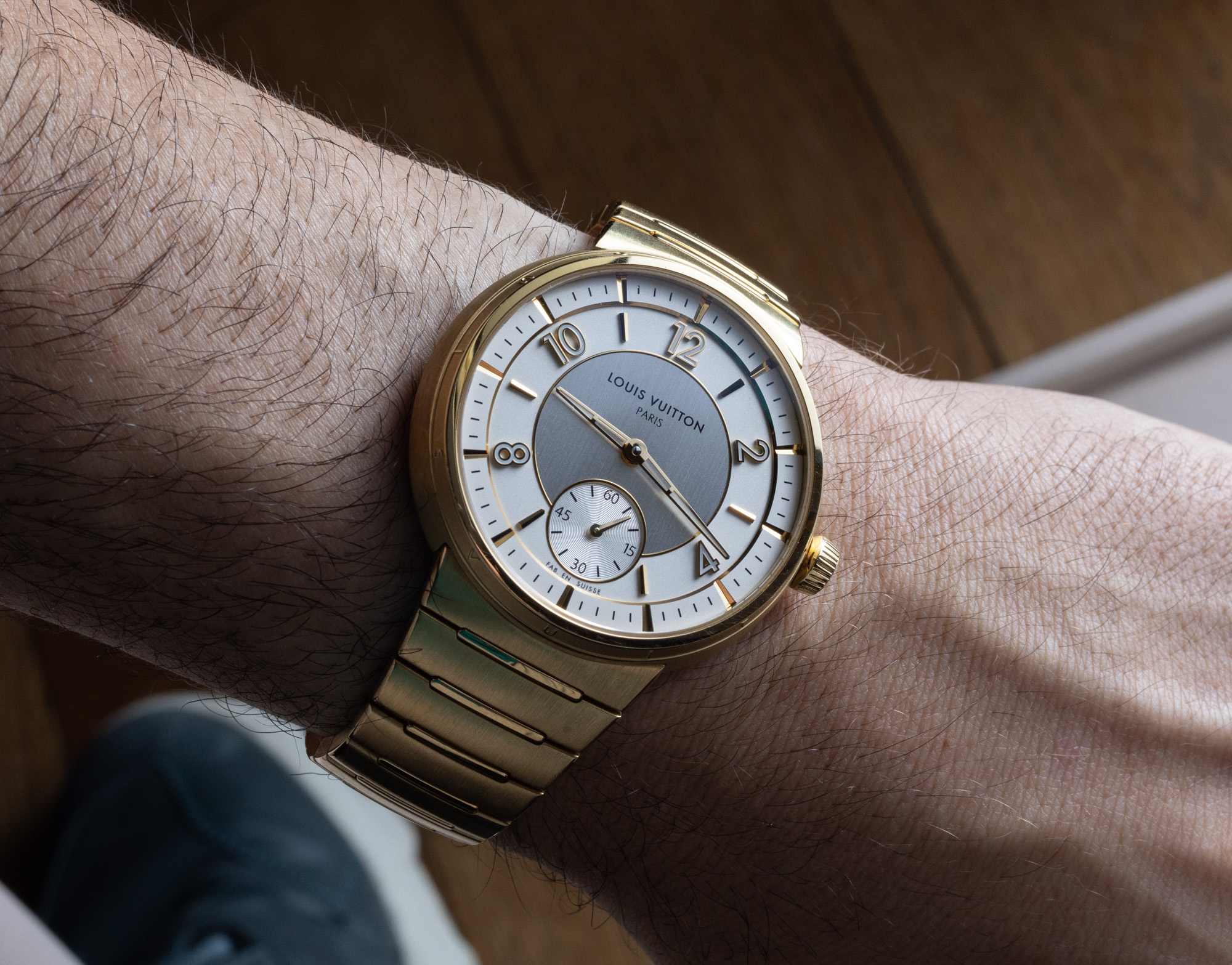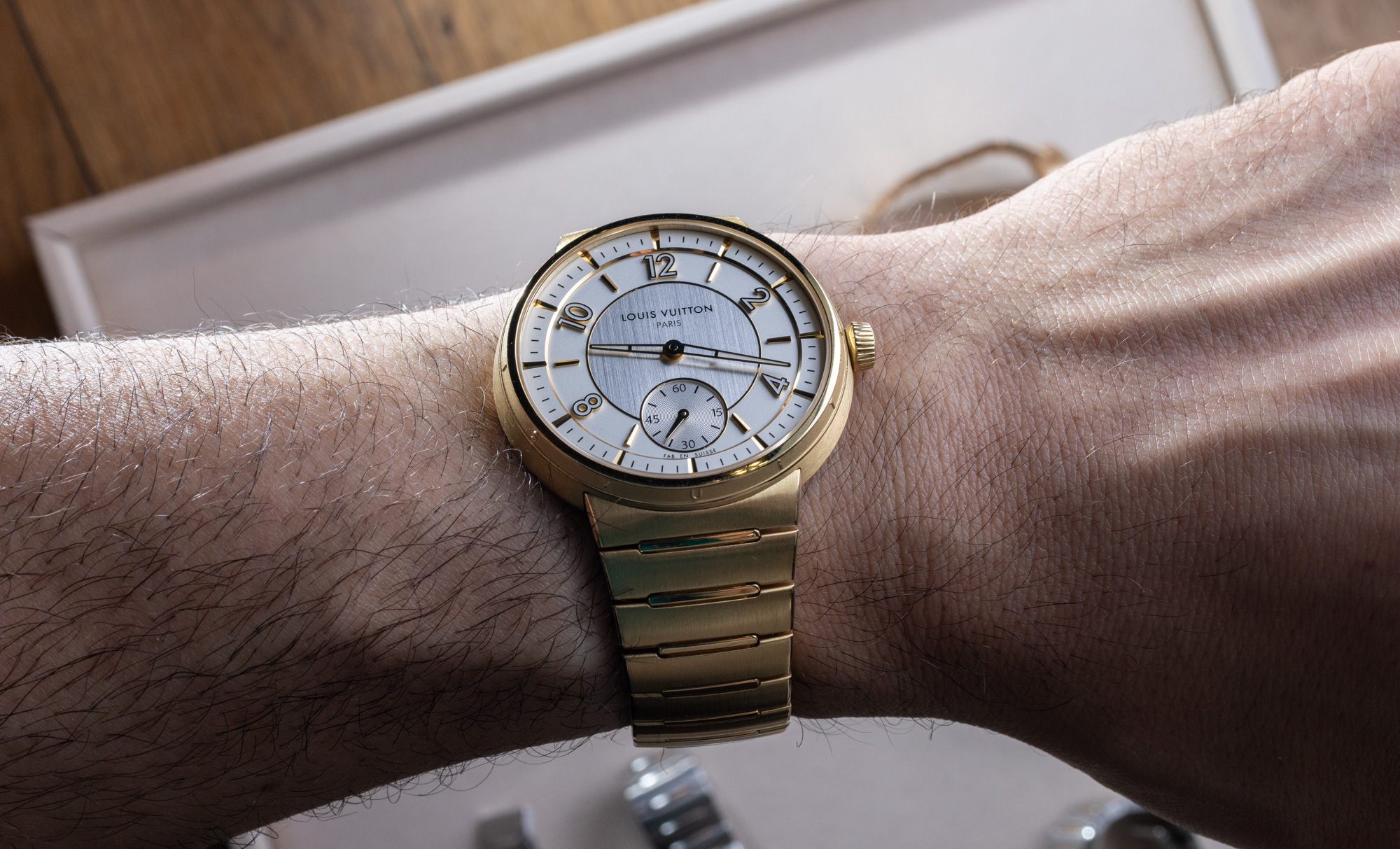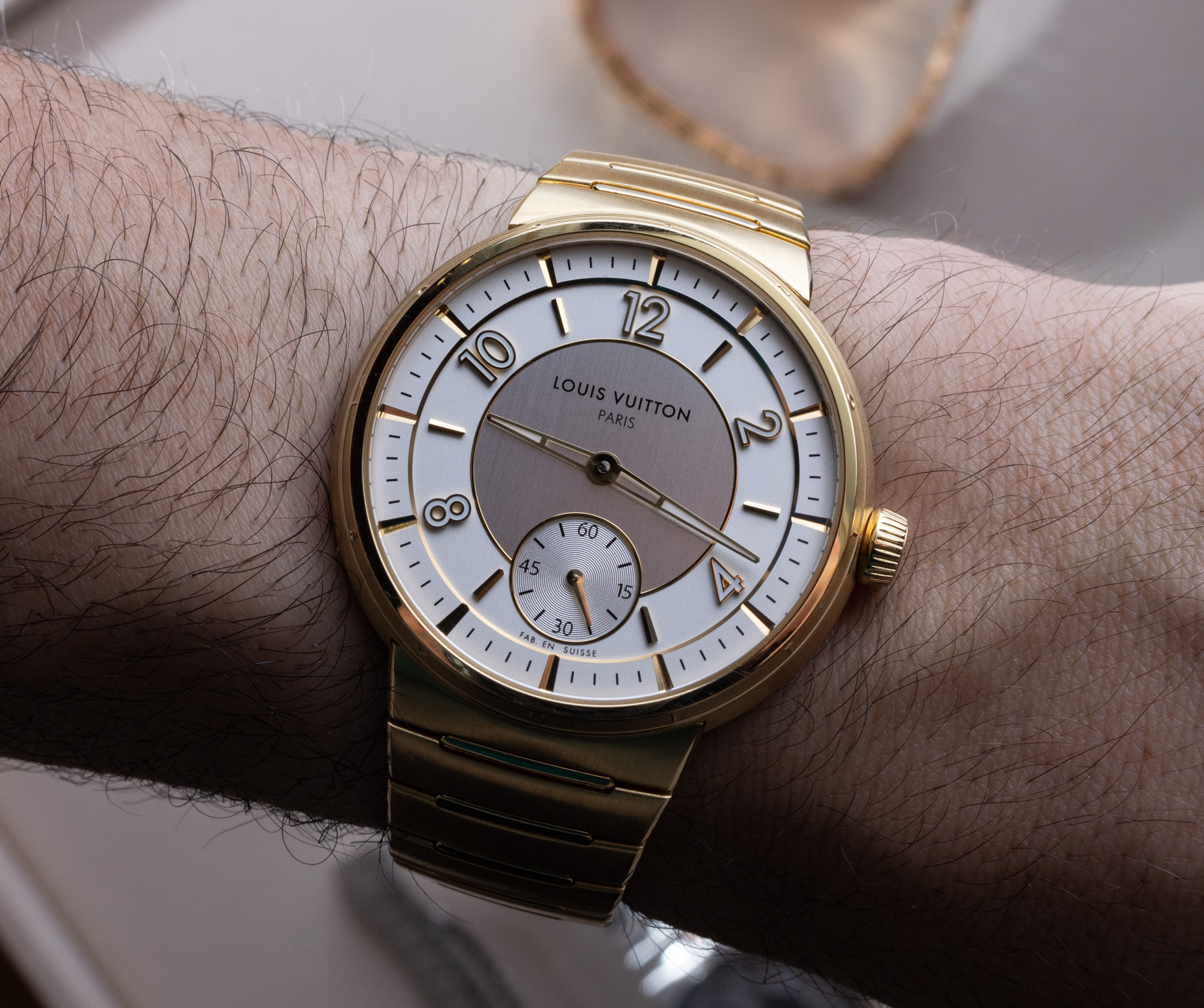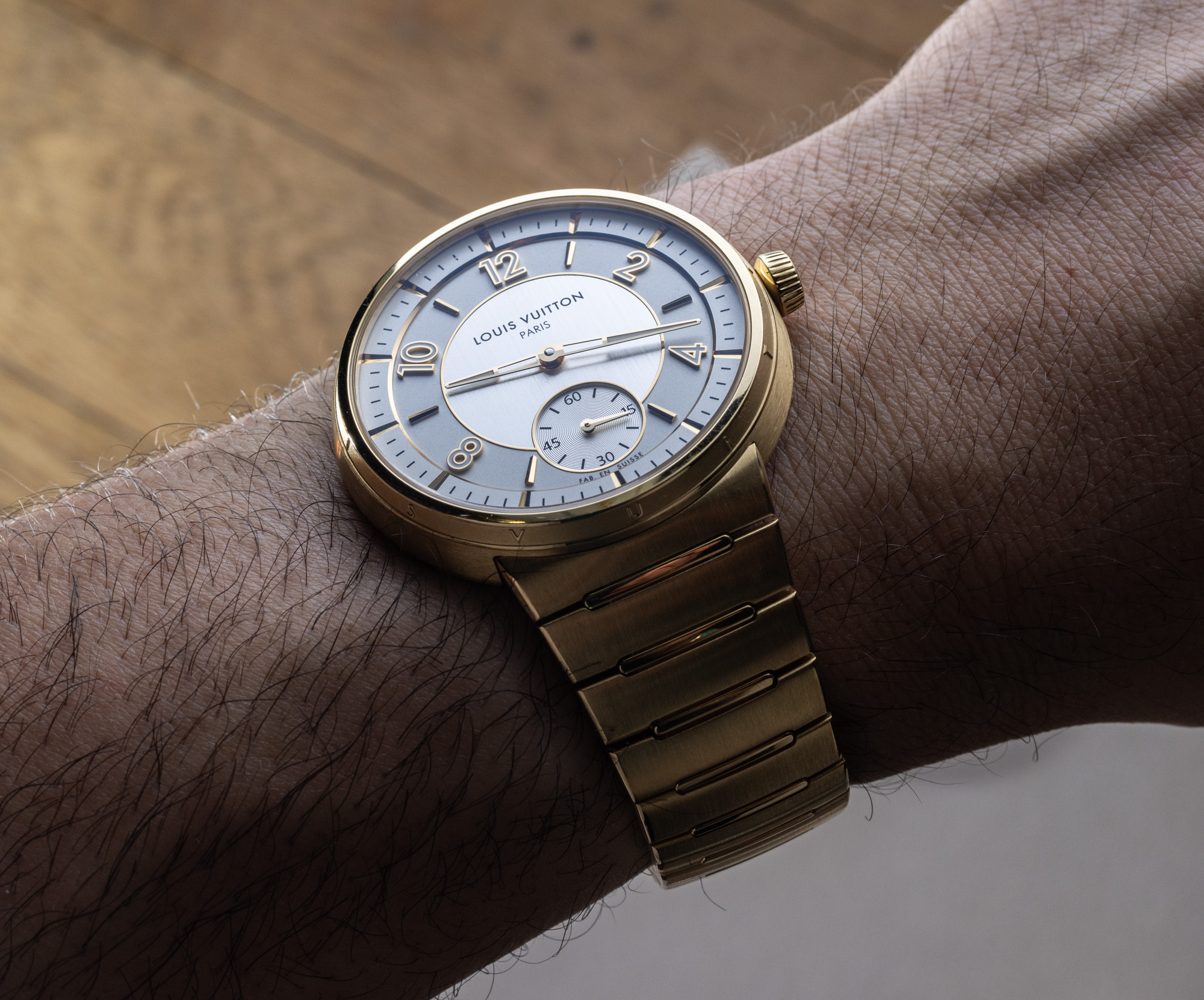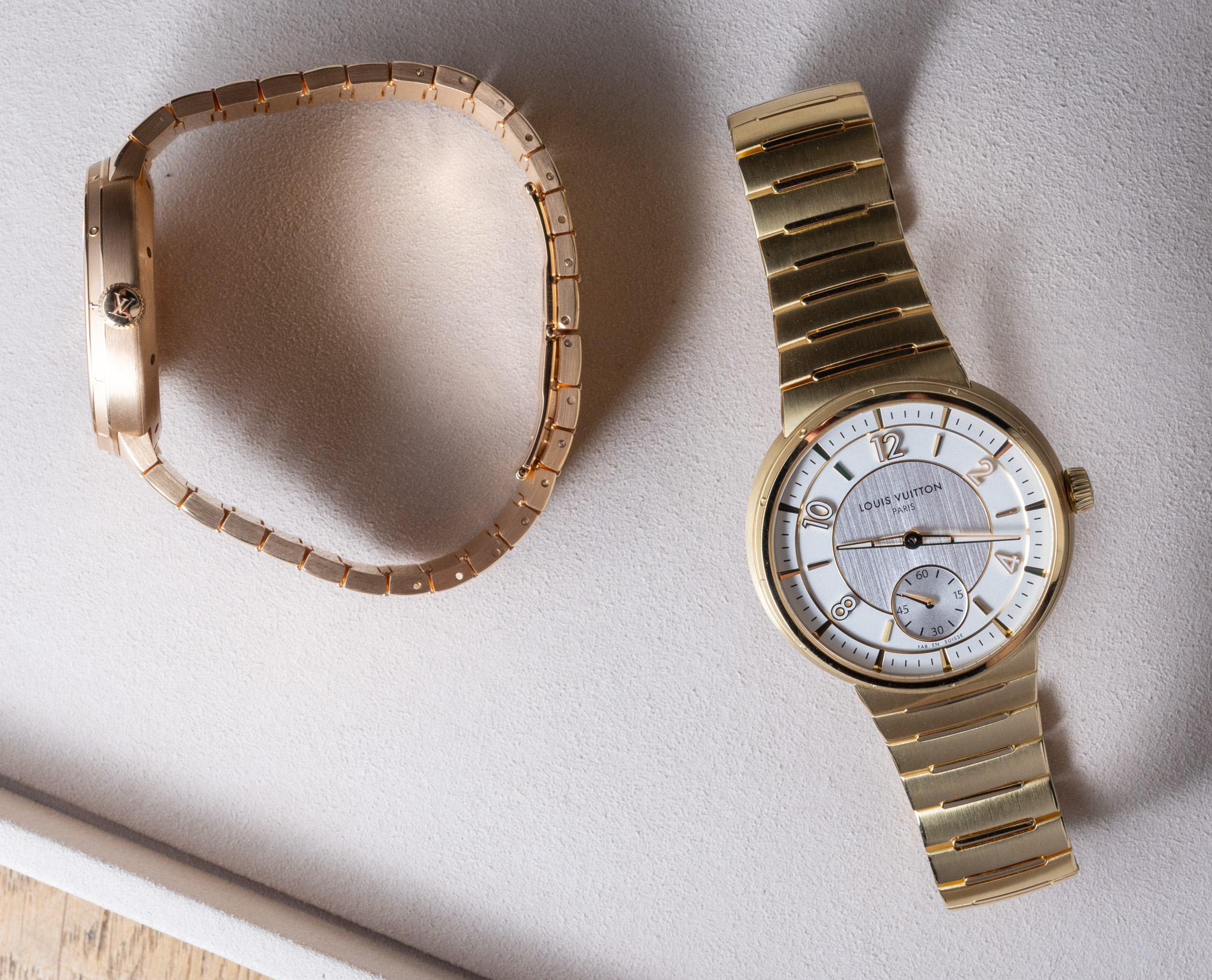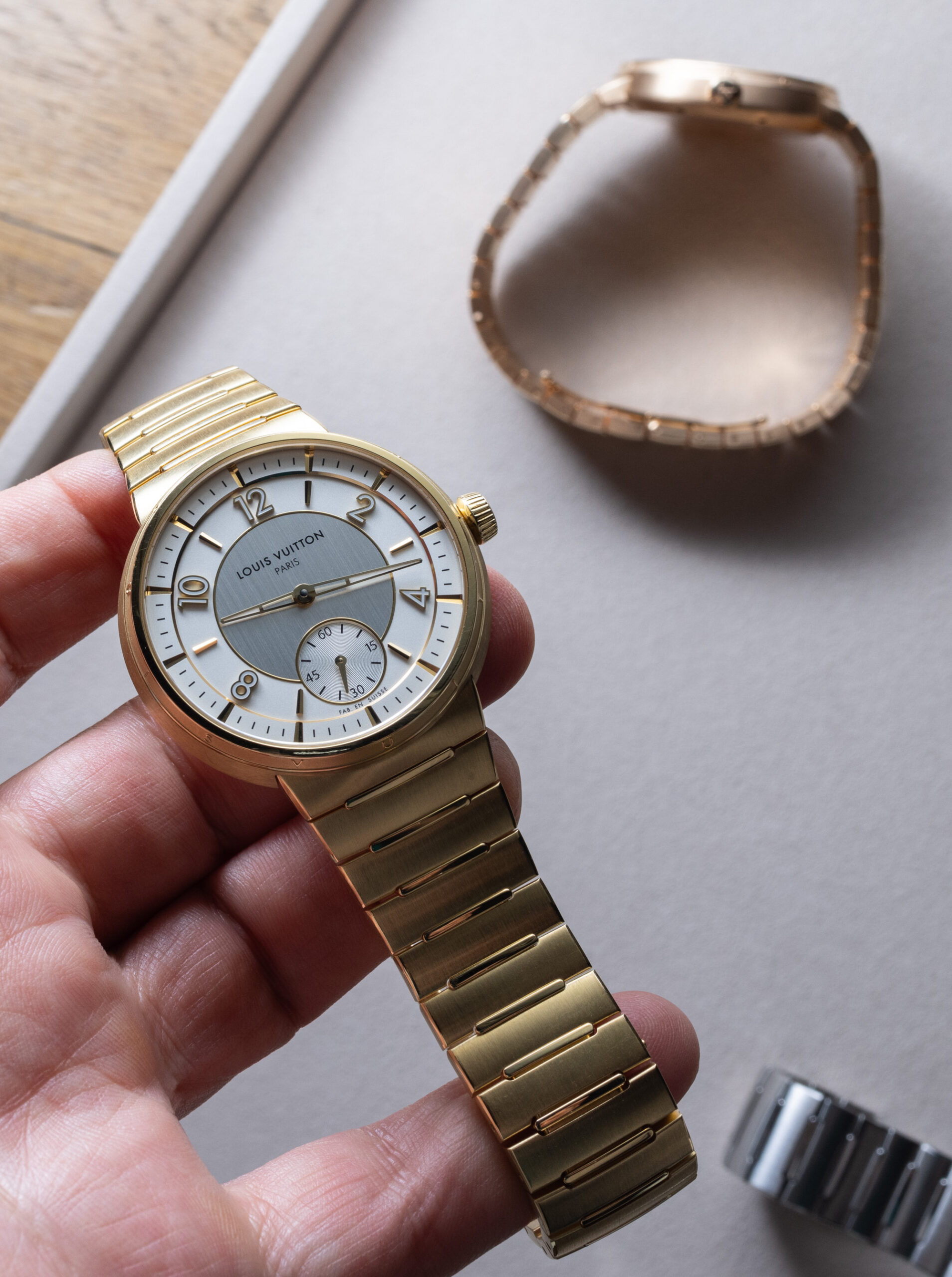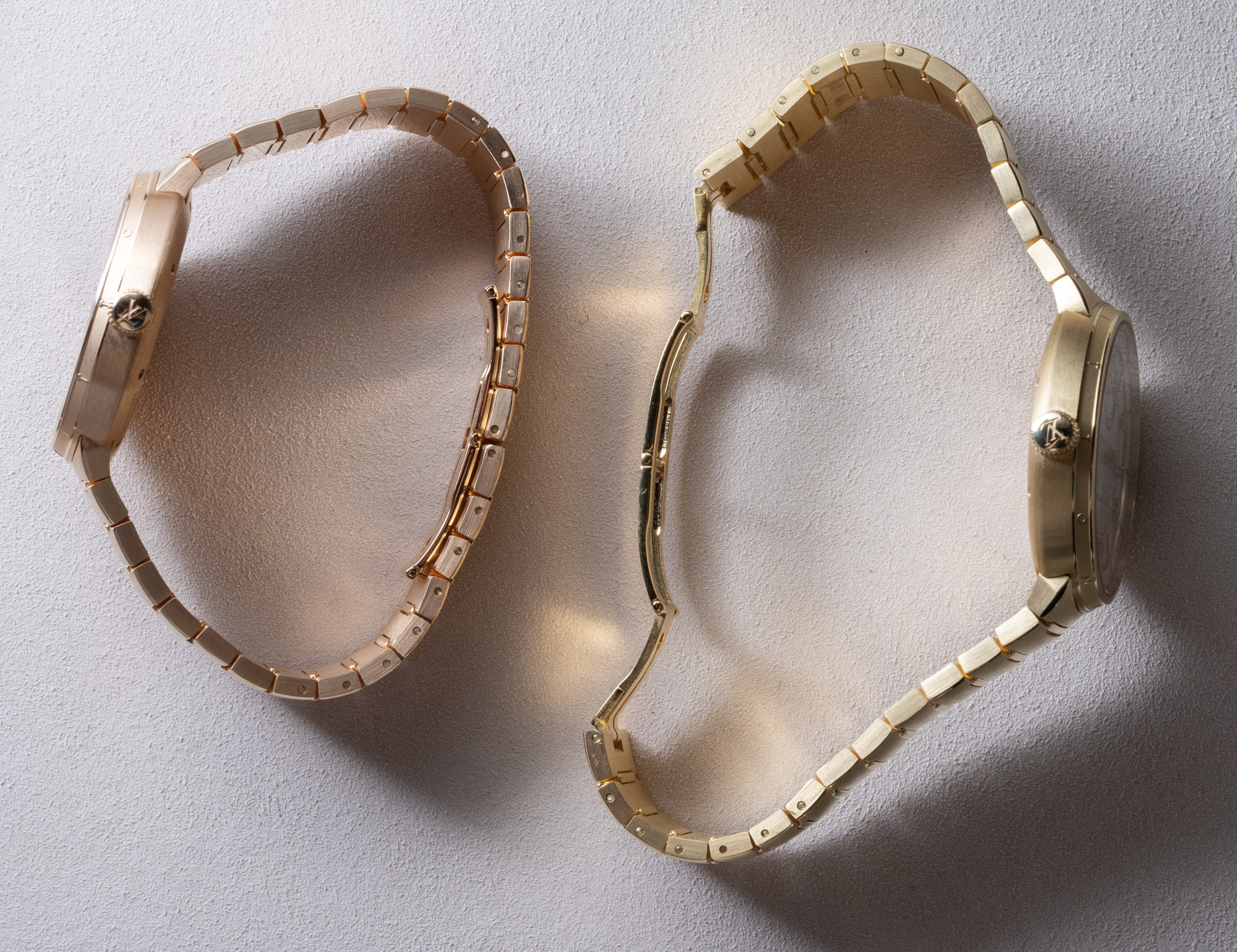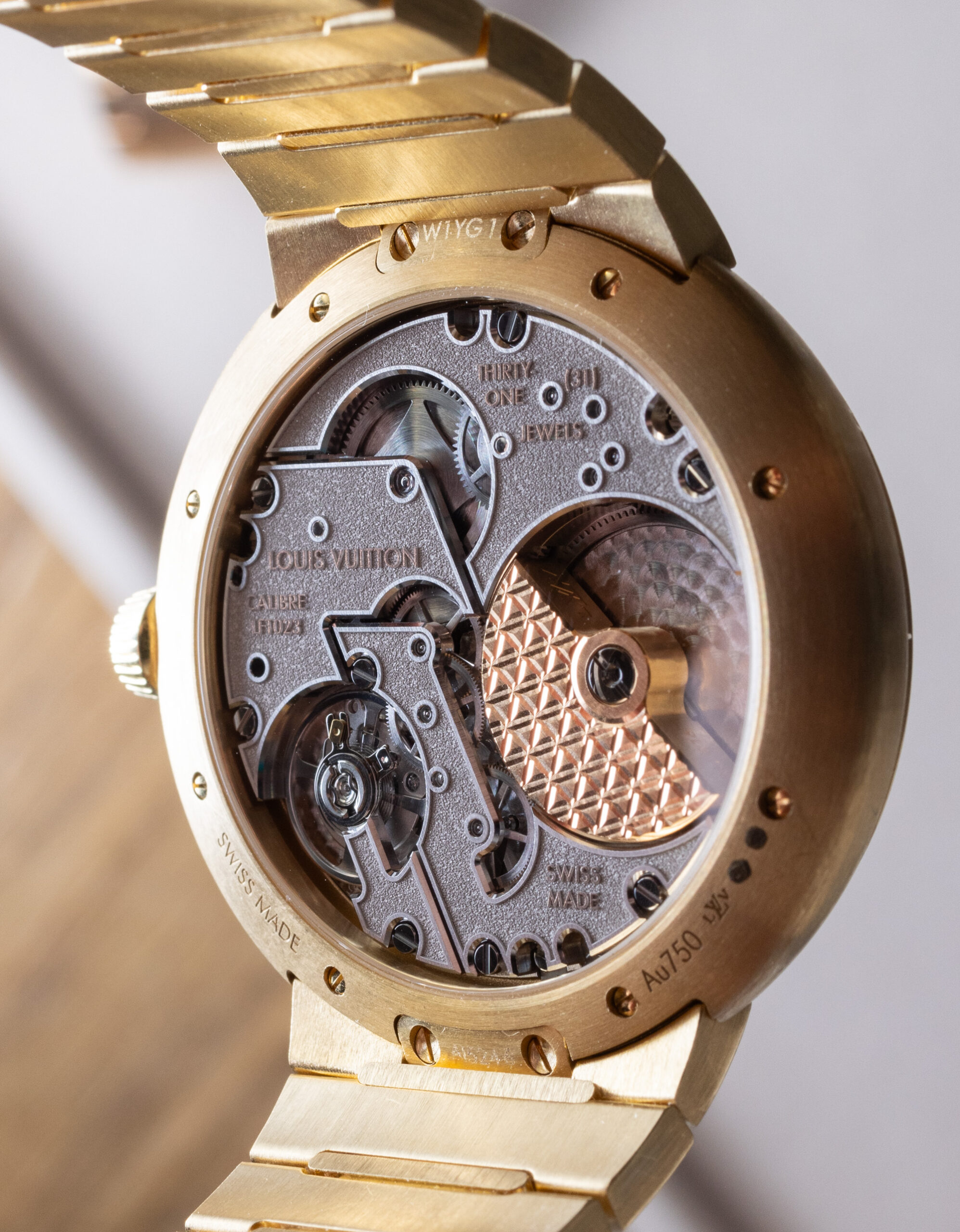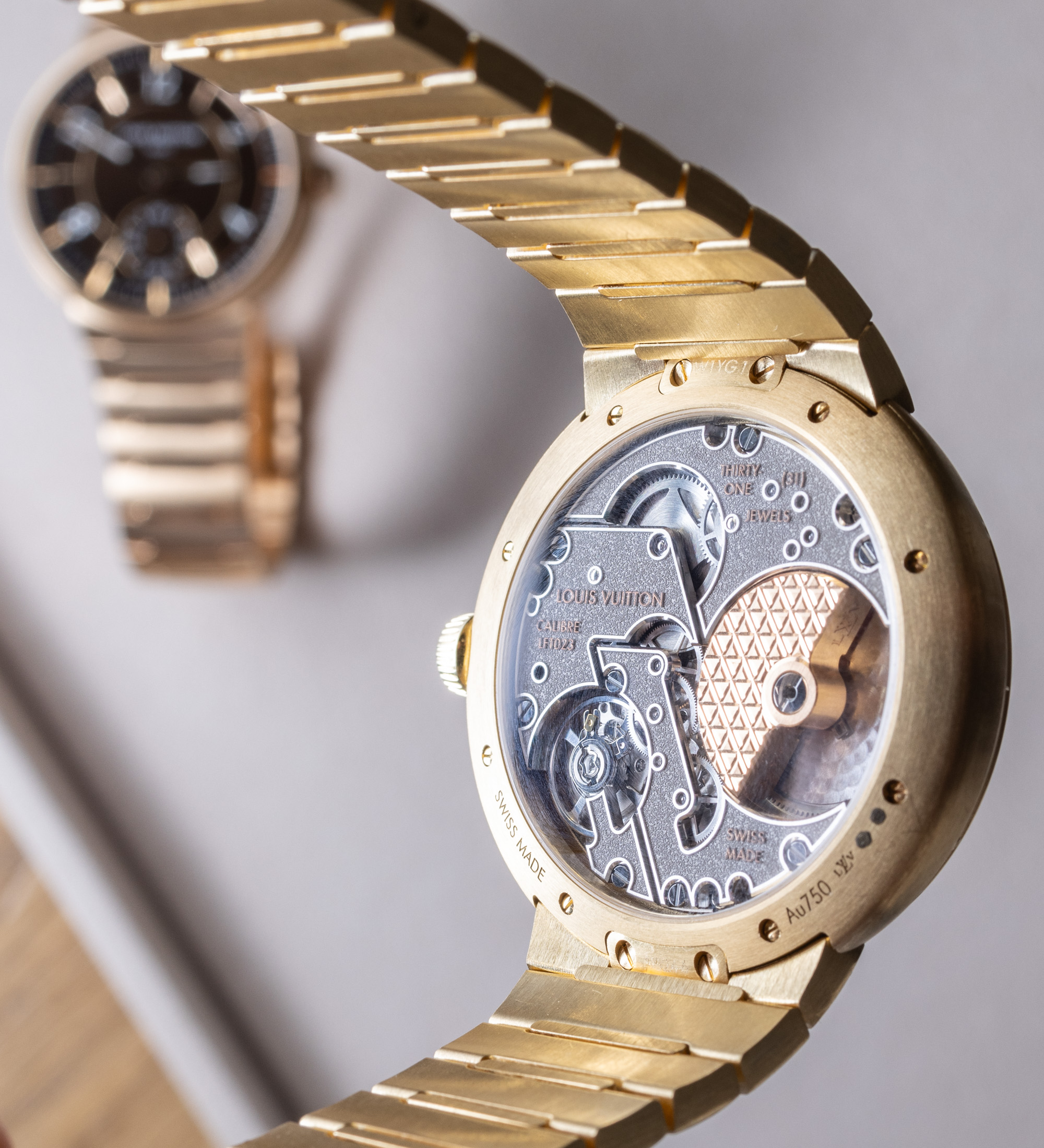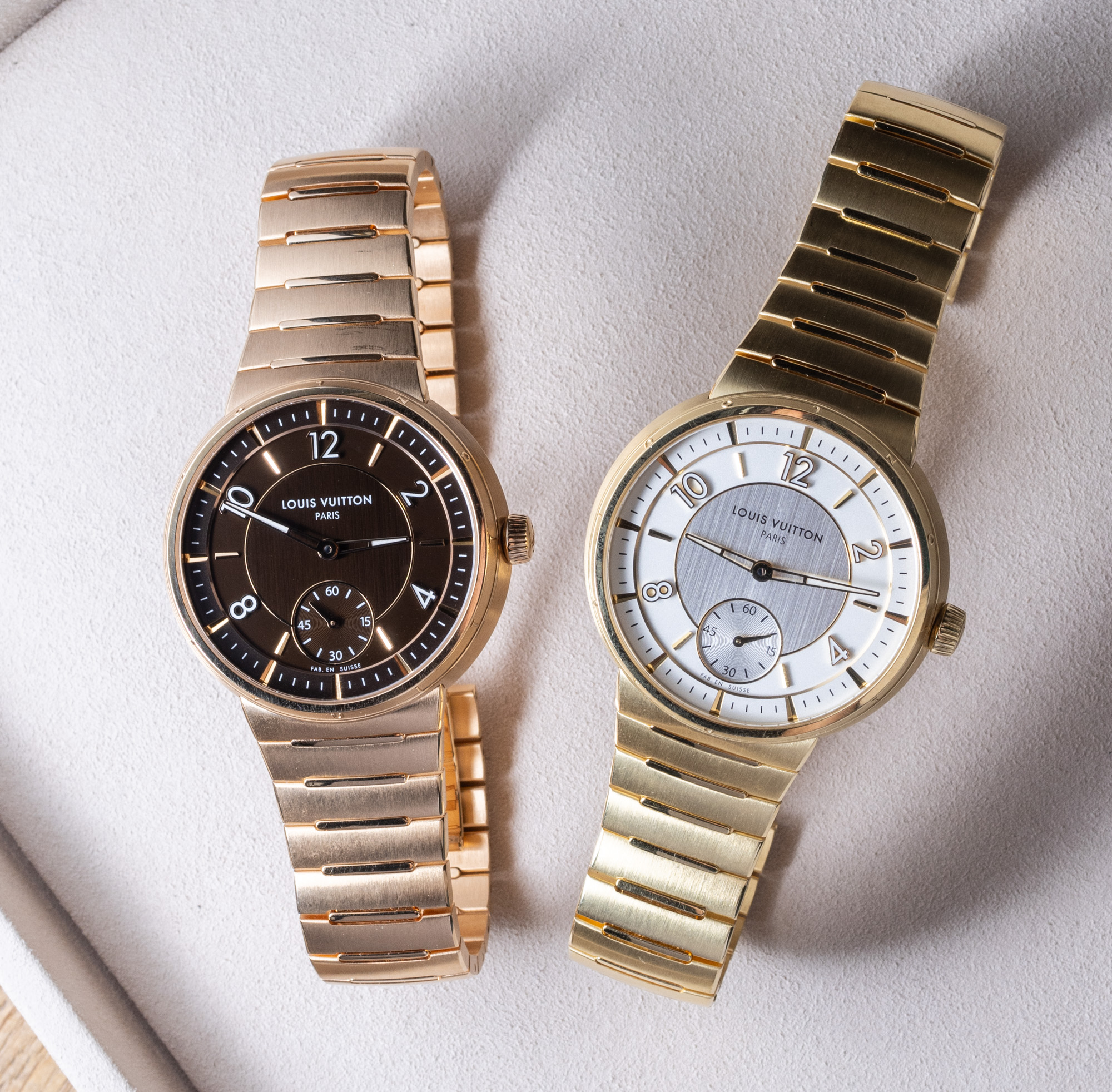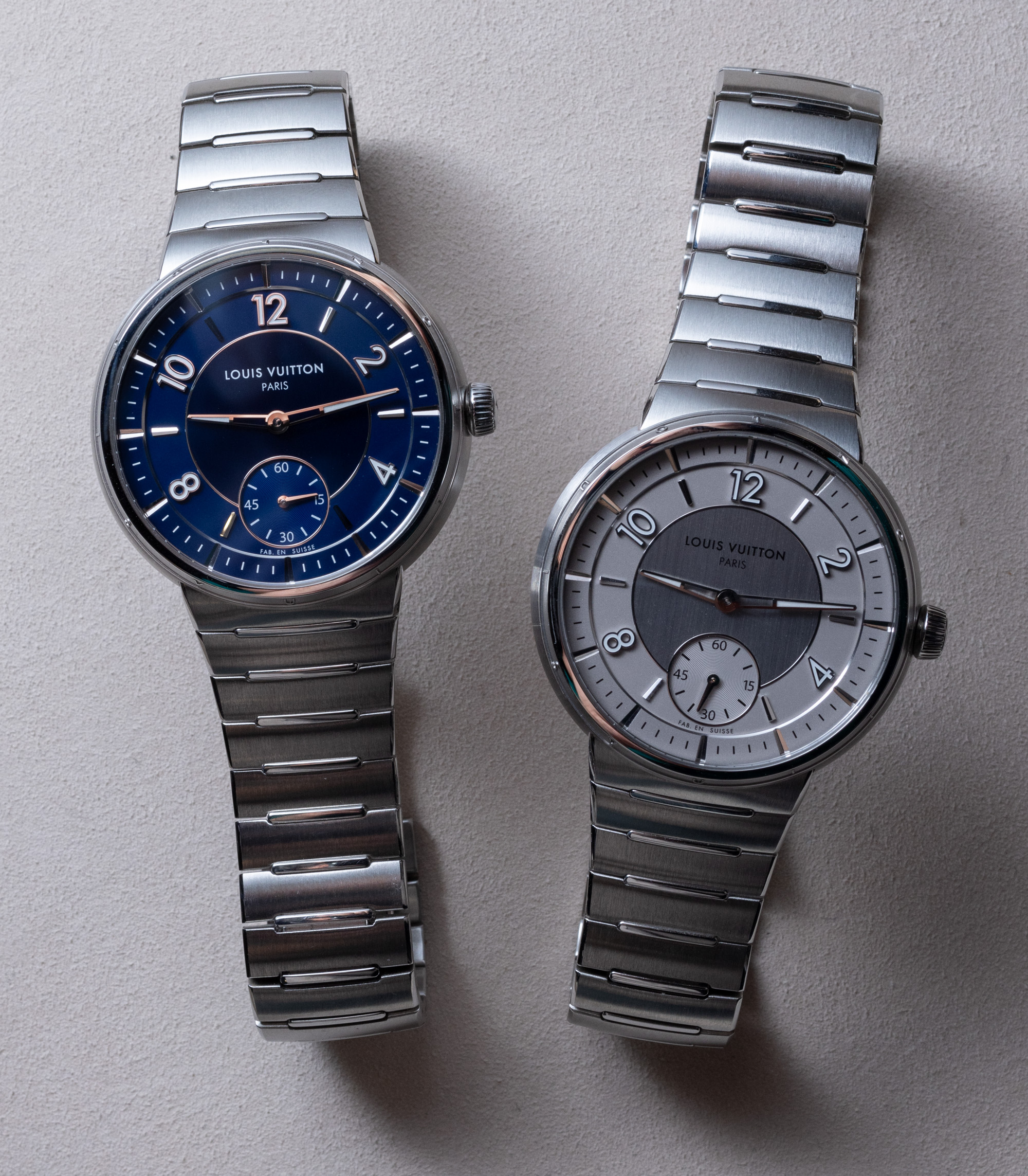
Earlier today in Paris, Jean Arnault who runs the watchmaking division at Louis Vuitton made two grand announcements. The first (and subject of this article) is the debut of the newly re-imagined Tambour watch collection. The second bit of news is that Louis Vuitton will immediately start to phase out much of its entry-level watch collection, in favor of smaller production, even higher-end models such as the new Tambour – all the way up to the million-dollar-plus personalized watches Louis Vuitton produces for elite clients out of their Swiss La Fabrique du Temps watchmaking manufacture.
On a very basic level, the new Tambour is the manifestation of Jean Arnault’s vision to have a highly competent (and well-respected by serious enthusiasts) integrated bracelet watch produced by Louis Vuitton. Over the last few years it has become en vogue for serious watchmakers to all have a Gerald Genta-esque men’s jewelry bracelet watch. This has been promulgated by impressive market performance from brands such as Audemars Piguet with their Royal Oak, and Patek Philippe with their Nautilus. Over the last few years there have been dozens of new watches in this space – at all prices ranges – and all with a simple mission – to capture some of the appeal of Genta’s famous designs from the 1970s. Put aside for a moment that Louis Vuitton’s parent company LVMH also owns the Gerald Genta name. It makes sense for Louis Vuitton to produce such a trendy watch style as it is undergoing a mission to be more generally accepted by serious watch enthusiasts. While Louis Vuitton has indeed been producing top-level, world-class haute horology for a while, it is also true that it can take long periods of time for the often conservative masses of timepiece enthusiasts to take attention of the news. It is Louis Vuitton’s hope that the Tambour will move away from being a mainstream luxury watch, and more an enthusiast’s choice in a world where serious watch appreciation is much more advanced today globally than it was back in 2002 when the Louis Vuitton Tambour collection was first launched.
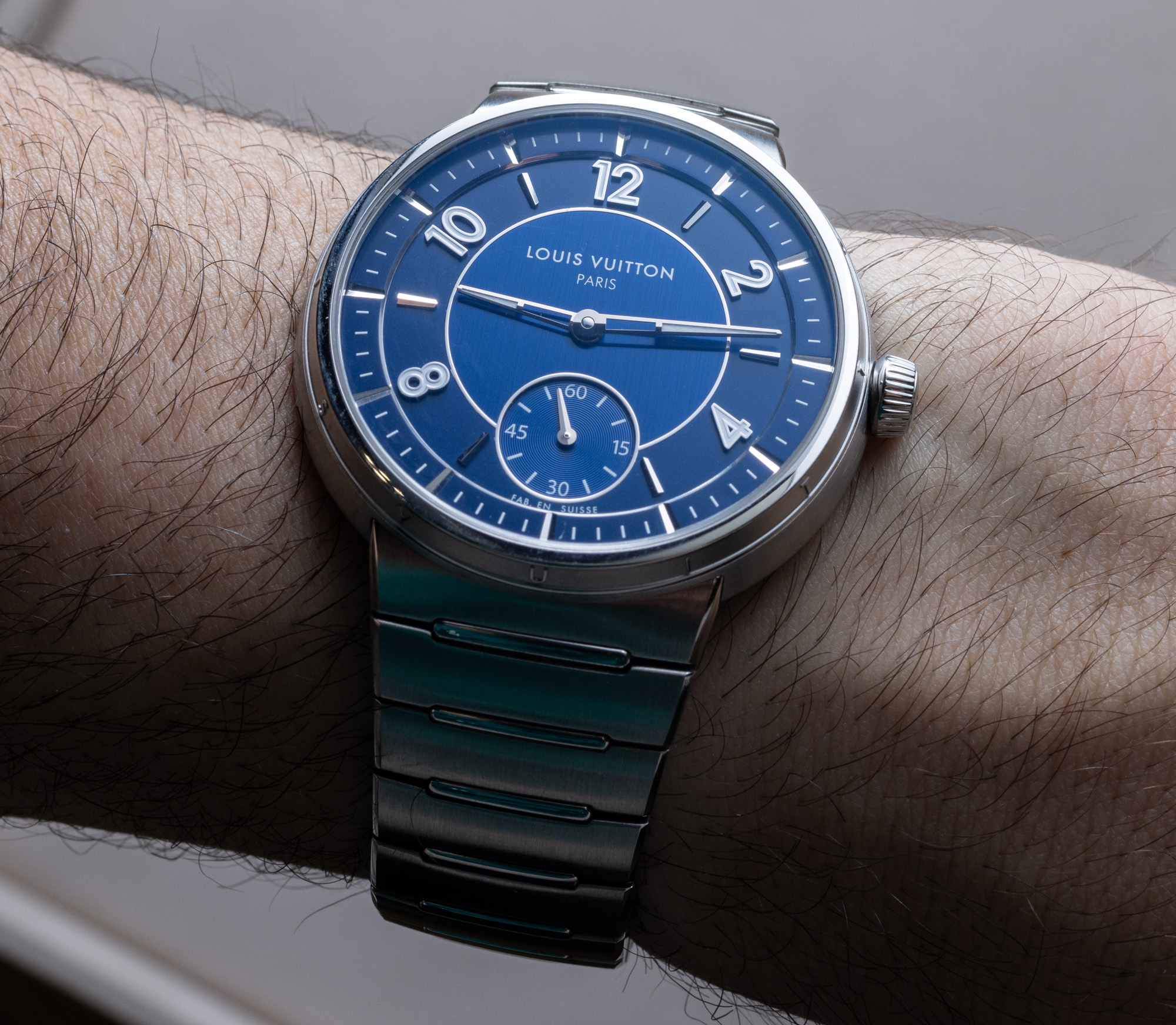
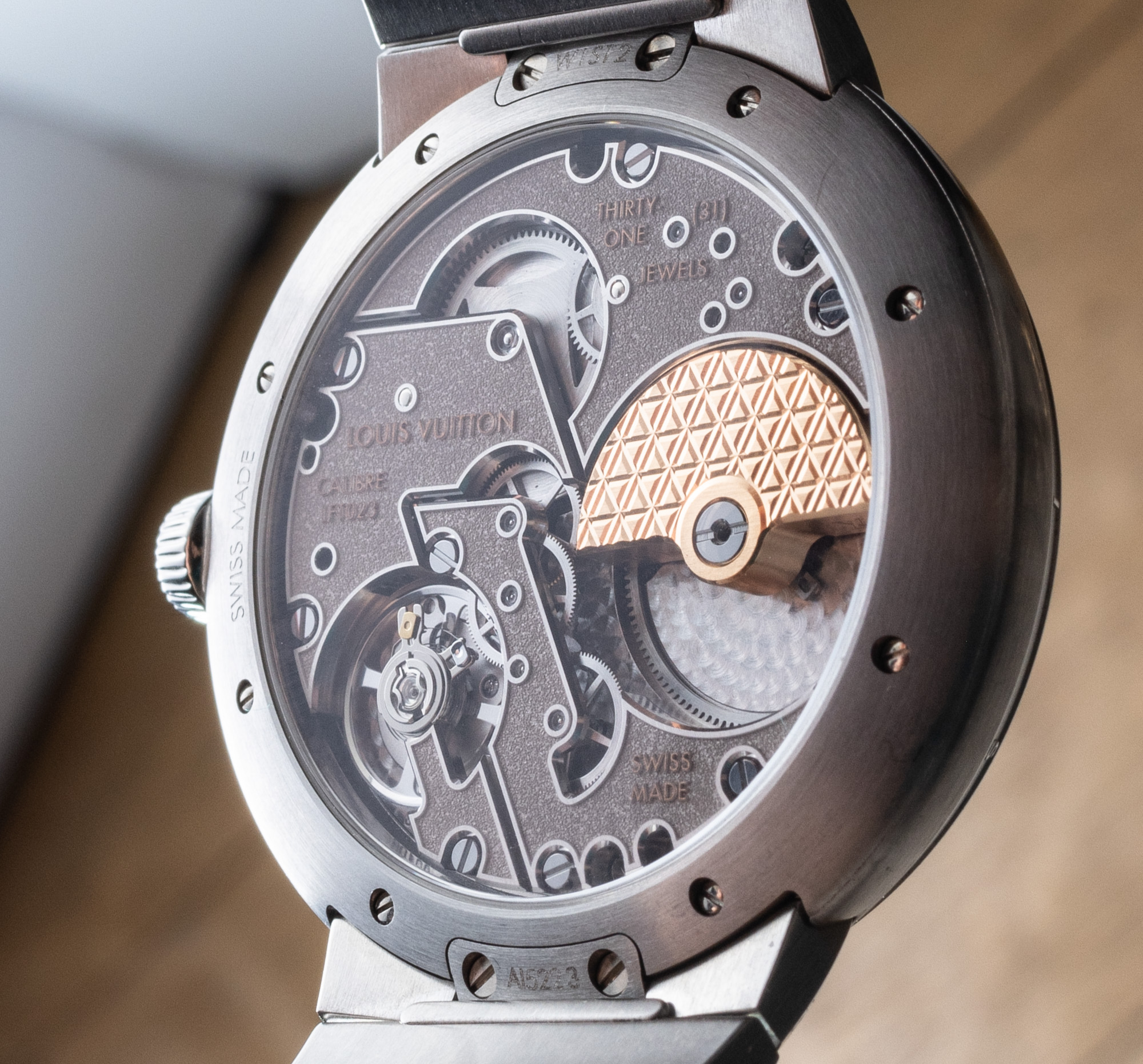
The 2023 Tambour (from the French term for “drum,” as related to the shape of the case) is not given any special name and is just called the “Louis Vuitton Tambour.” At launch there are going to be five versions, including two steel models, a two-tone steel and gold model, as well as an all-solid 18k yellow or 18k rose gold version. Everything about these watches is brand new and carefully detailed. That includes a new dial, case, bracelet, and even the movement. It is my hope that people view these watches in person to fully appreciate them. In images much about these watches can be deceiving – for example the prominence of the “Louis Vuitton” name on the periphery of the bezel. It looks to be very apparent in Louis Vuitton’s fancy marketing images. Though in reality this detail is subtle and you can’t even really see that it says “Louis Vuitton” without looking at it very closely. Also impressive in person is just how well the Tambour’s dial plays with the light. The dial nerds at La Fabrique du Temps went all out making an interesting dial that is both familiar, fresh, legible, and luxurious. That is very, very hard to do. With that said, it is clear that Louis Vuitton was highly inspired by other famous three-hand watches including a lot of vintage inspiration. Louis Vuitton excellently curates its own history, Parisian culture, and watchmaking legacy into one beautiful Tambour collection. For those like me who get excited about beautiful French-aesthetic designed watches produced by the most capable people in Switzerland – the new Tambour is certainly something to get excited about. The exact reason why people once frowned upon “fashion house” watches (their focus on aesthetics and beauty), is now helping Louis Vuitton to produce a product that is good enough for the mainstream, but really made to impress watch collectors. If you haven’t noticed yet – we are in an era when a high-end watch coming from a fashion house like Louis Vuitton is increasingly a plus more so than anything else.
Despite his relative youth, Jean Arnault has proven to be a great curator of taste and popularity in the elite timepiece space. He naturally absorbs huge amounts of information related to what timepieces people are talking about as well as what attracts his own interests. In the new Tambour, you can clearly see elements of the watch that just as Jean would like them, and other details which are meant to help others in the crowded luxury watch space appreciate his vision. This seems to result in a Tambour watch that combines Louis Vuitton DNA will a collective sense of what is popular in contemporary fine watchmaking.
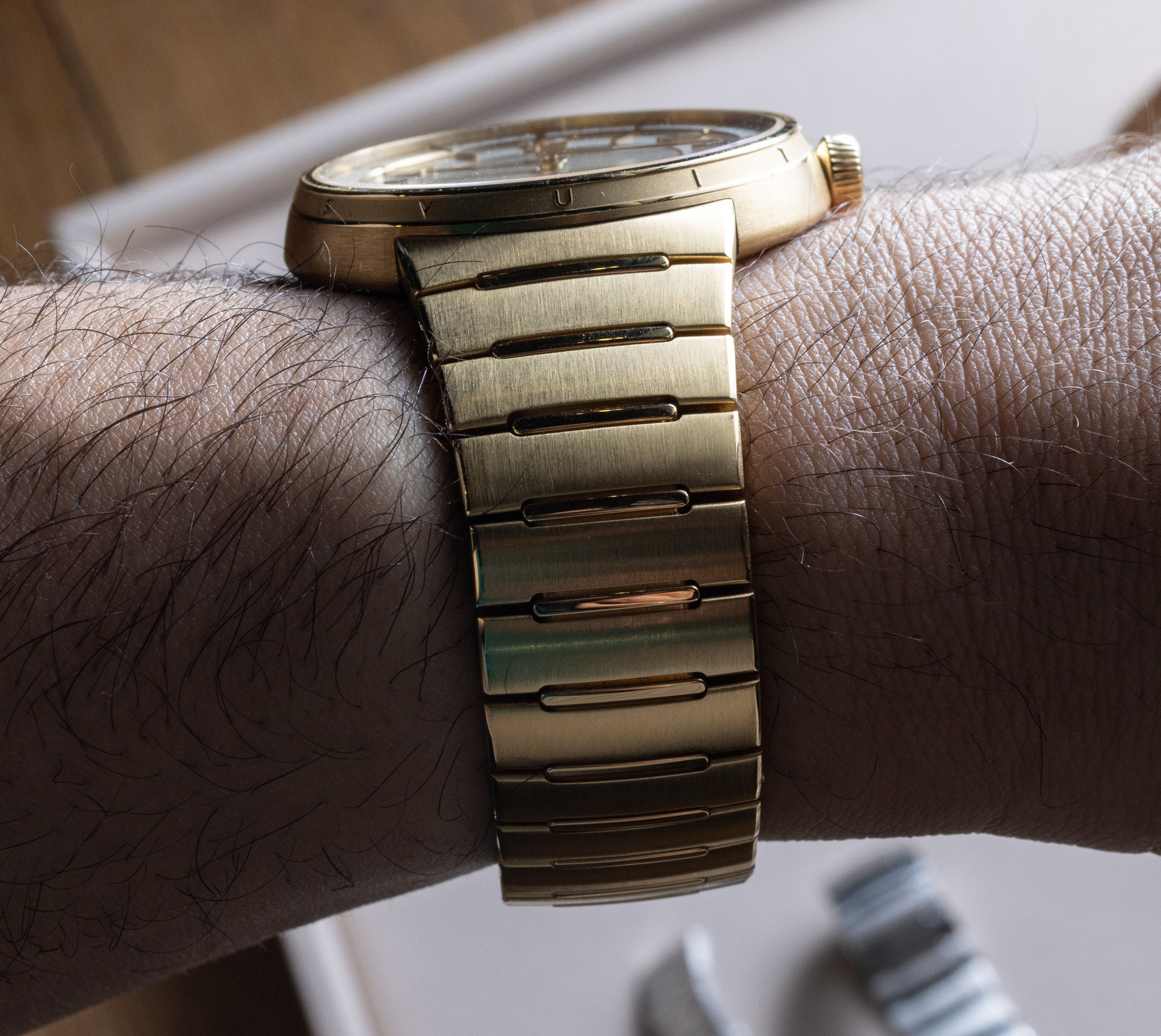
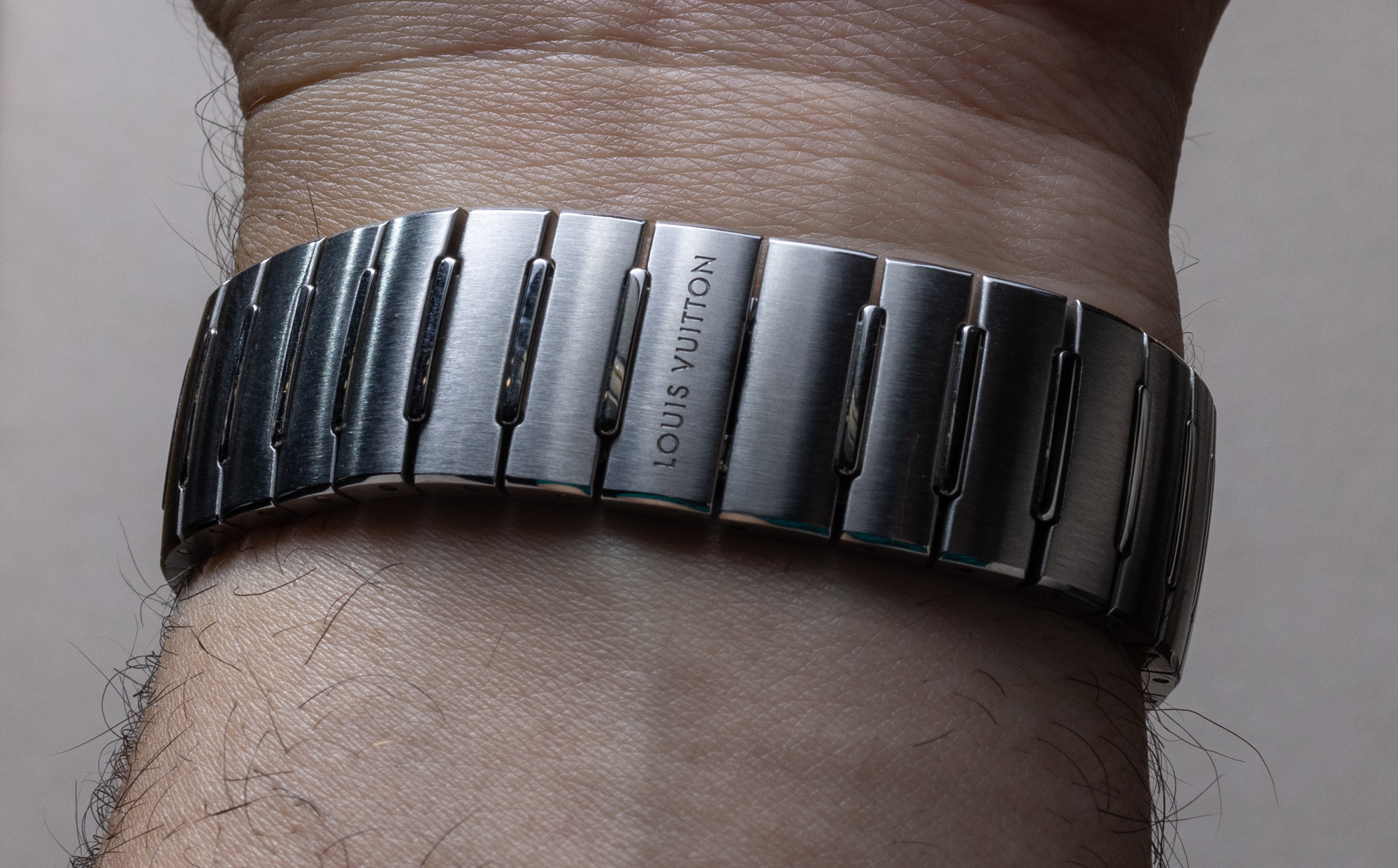
The Tambour case shape remains, but in a form that isn’t like anything that has come before it. Not only in dimension but also in how the case is constructed and assembled. The case is 40mm wide but it wears on the smaller size due mainly to the lugless structure and thin 8.3mm case thickness. Louis Vuitton makes a point to remark that even though the Tambour is already thin at 8.3mm, it “wears” even smaller like a 5 or 6mm thick timepiece. Accordingly, Louis Vuitton pens the Tambour as a unisex watch. Frankly speaking, this is a men’s watch, but it is one that can be worn by women who are looking for something that isn’t too large, but still feels masculine by design.
The bracelet elegantly merges into the case design and is one of the focal points of the new Tambour. It is likely that Louis Vuitton will experiment with versions of the new Tambour on a strap in the future, but it would be a shame to divorce this case from the bracelet that was designed to go with it. What Louis Vuitton first deserves praise for is coming up with a novel bracelet design that does not immediately resemble something else that is one the market. Kudos to Louis Vuitton for not cutting corners such as opting to use bracelet links that curve as they taper – as opposed to using straighter lines for the taper. This slight visual change comes with relatively high extra production costs given both the need to create a larger variety of unique parts of the watch, as well as using more complicated finishing techniques. The Tambour’s bracelet is also thin and comfortable to wear on the wrist. That is the second thing that Louis Vuitton got right.
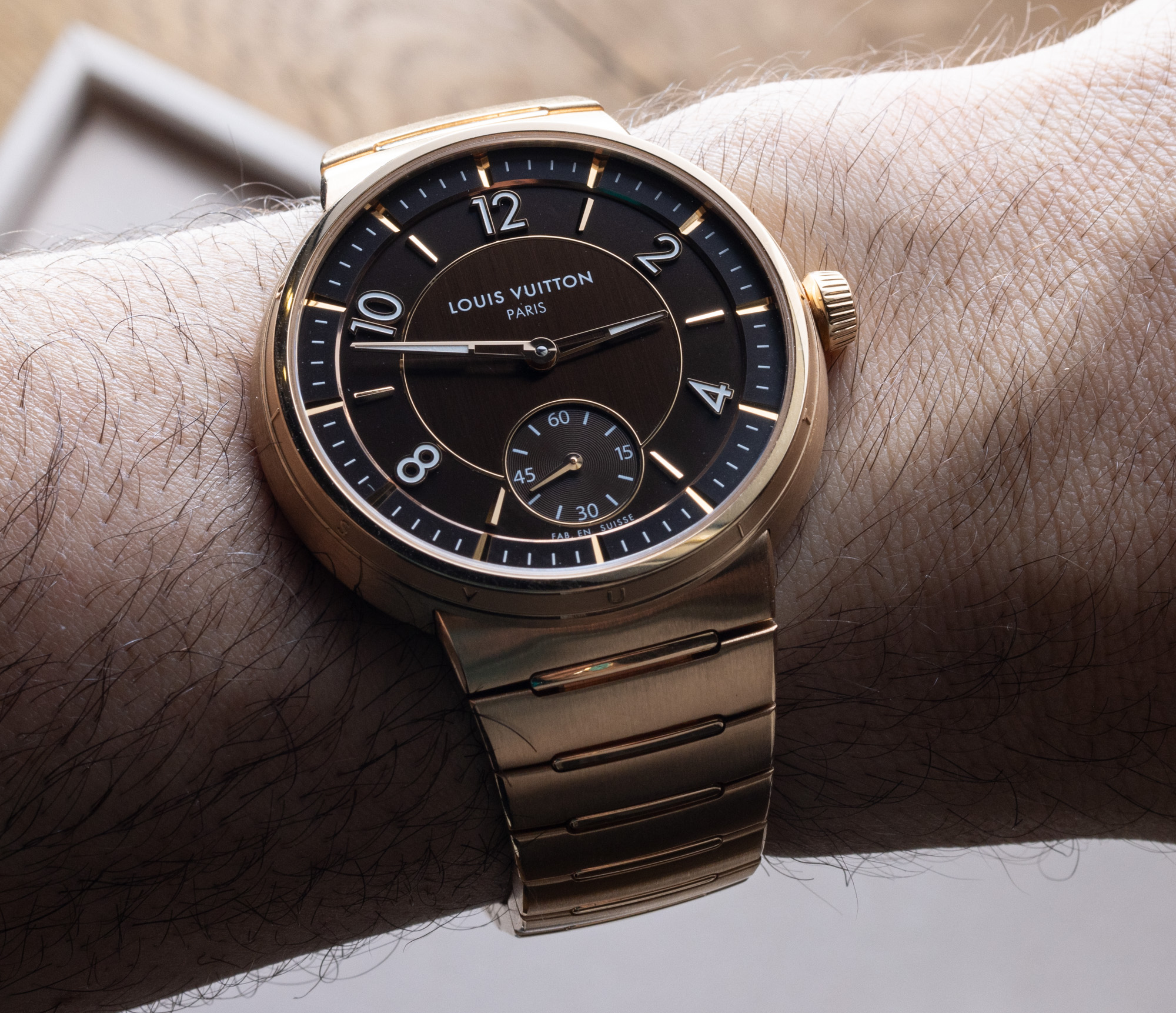
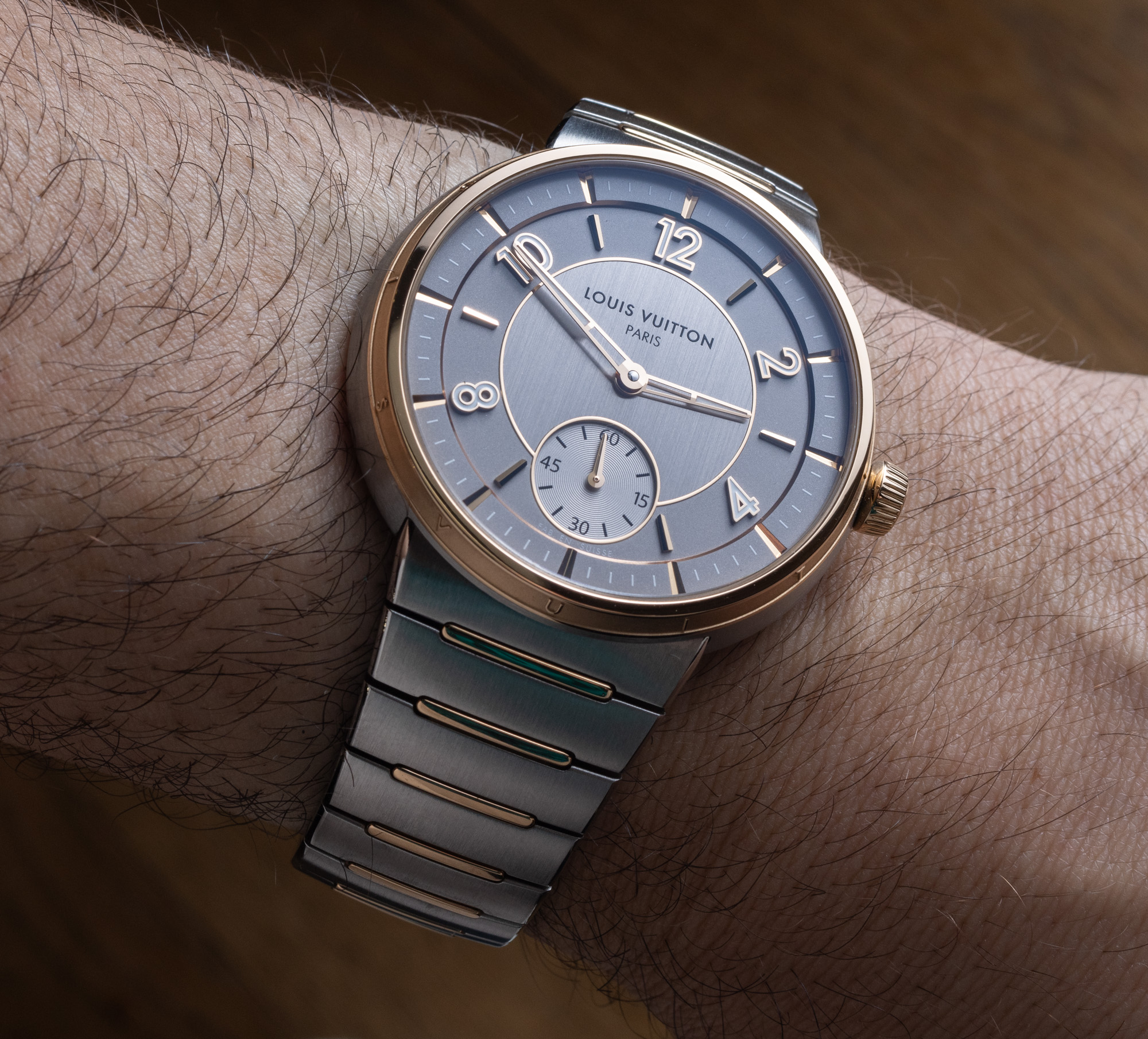
I do however think that the bracelet presents more opportunity for research and development in the form of the deployment clasp. There is nothing wrong with it at all, but I just think that with all the unique parts and elements in the watch overall, the bracelet deployant could be another area for brand differentiation. Companies like Louis Vuitton can easily set themselves apart from the competition by focusing on areas of the watch that other companies can’t or won’t. Much of the time watch brands are too weary of creating entirely unique parts for tier two parts of the watch like the bracelet (as important as they are, brands still focus more on a watch case and movement than the bracelet. Even though the wearer probably interacts with the bracelet more than the case or movement). Louis Vuitton is a big enough and rich enough company that they can develop not only a unique bracelet for the Tambour, but one that has a novel (or at least novel-looking) opening and closing system. Again, nothing wrong with the operation of the butterfly-style deployant on the Tambour, but I do think it is an area where Louis Vuitton can have much more fun in the future. It is also an area that most other brands wouldn’t sink research and development money into. So if Louis Vuitton managed to come up with something interesting, it would help them further distinguish themselves on the market.
Inside the new Tambour watches is a movement known as the caliber LTF023. This is the first in-house designed three-hand automatic movement by Louis Vuitton, and its development and production is a collaboration between La Fabrique du Temps in Geneva, and a movement specialist company known as Les Cercle des Horlogers located in La Chaux-de-Fonds. The 4.3mm thick automatic movement uses some special systems intended for use in highly complicated watches that were developed in La Fabrique de Temps over the years. This includes features such as a unique escapement as well as a buttery smooth experience when manually winding the movement via the crown. The movement operates at 4Hz with 50 hours of power reserve. The aesthetics of the movement are excellent, with a frosted look to many of the bridge surfaces and a guilloche-engraved micro-rotor produced out of solid gold (the weight assists with winding inertia efficiency). The movement indicates just the time with a subsidiary second indicator.
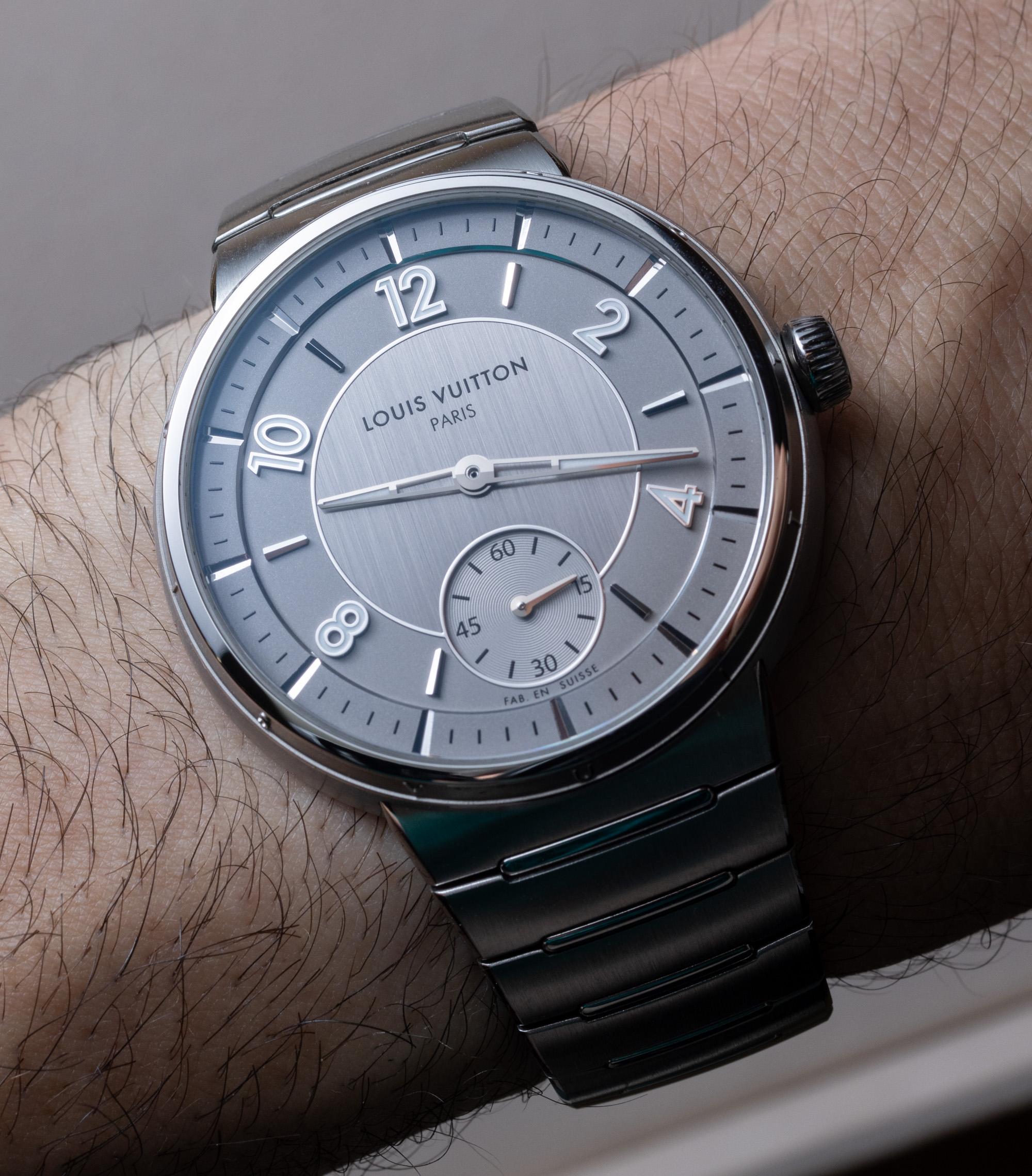
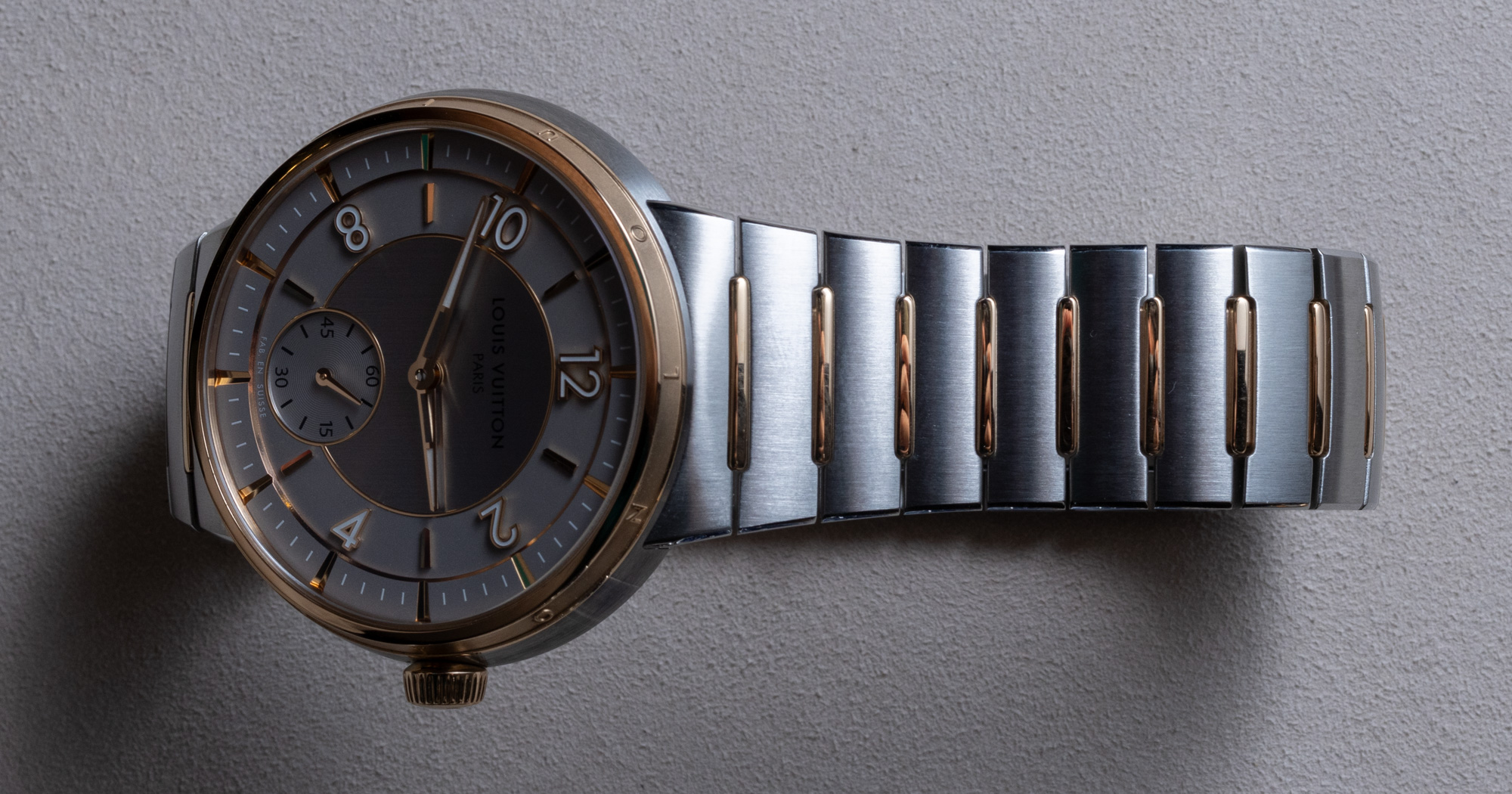
Most important about the movement is its certification as a Chronometer. It isn’t a COSC Chronometer but rather a Chronometer certified by the Geneva Observatory (TIMELAB Foundation) where another certification is given – the Seal of Geneva. Given that parts of the movement are produced outside of the canton of Geneva (in La Chaux-de-Fonds), I suspect that the Tambour does not strictly satisfy the regional element required to get the Poincon de Geneve. With that said, the Tambour gets a similar performance and rate result test with the movement being cased inside of the watch (to ensure that it satisfies the requirements under the ISO 3159 standard). Recall that COSC Chronometer certification only tests the movement, outside of a case, which really isn’t as good as testing a movement after hands have been applied and it has been cased up in a final wristwatch. You can view the movement through the sapphire crystal caseback of the watch. The case itself is water resistant to 50 meters. Over the dial is of course an AR-coated sapphire crystal as well.
I could easily write an entire article discussing the dial design and construction of the new Tambour. Louis Vuitton offers it in five different colors at launch, and it really looks great when rendered in a variety of ways. The challenge for Louis Vuitton here was impressive. They needed to capture the essence of both modern and vintage watchmaking, as well as Louis Vuitton brand DNA. It had to be a design that was novel and fresh, but also timeless and familiar. Getting that right took hundreds of variations, and despite that it is of course true that there will be those who feel Louis Vuitton could have taken the Tambour dial design even further. In my opinion the dial is excellent, and the only thing I would continue to experiment with in the future are different styles of hands. For example, I still don’t understand why partially skeletonized hands are loved by designers on watch faces that neither need them nor benefit legibility-wise. The hands and hour markers do have SuperLumiNova painted on them – which is good.
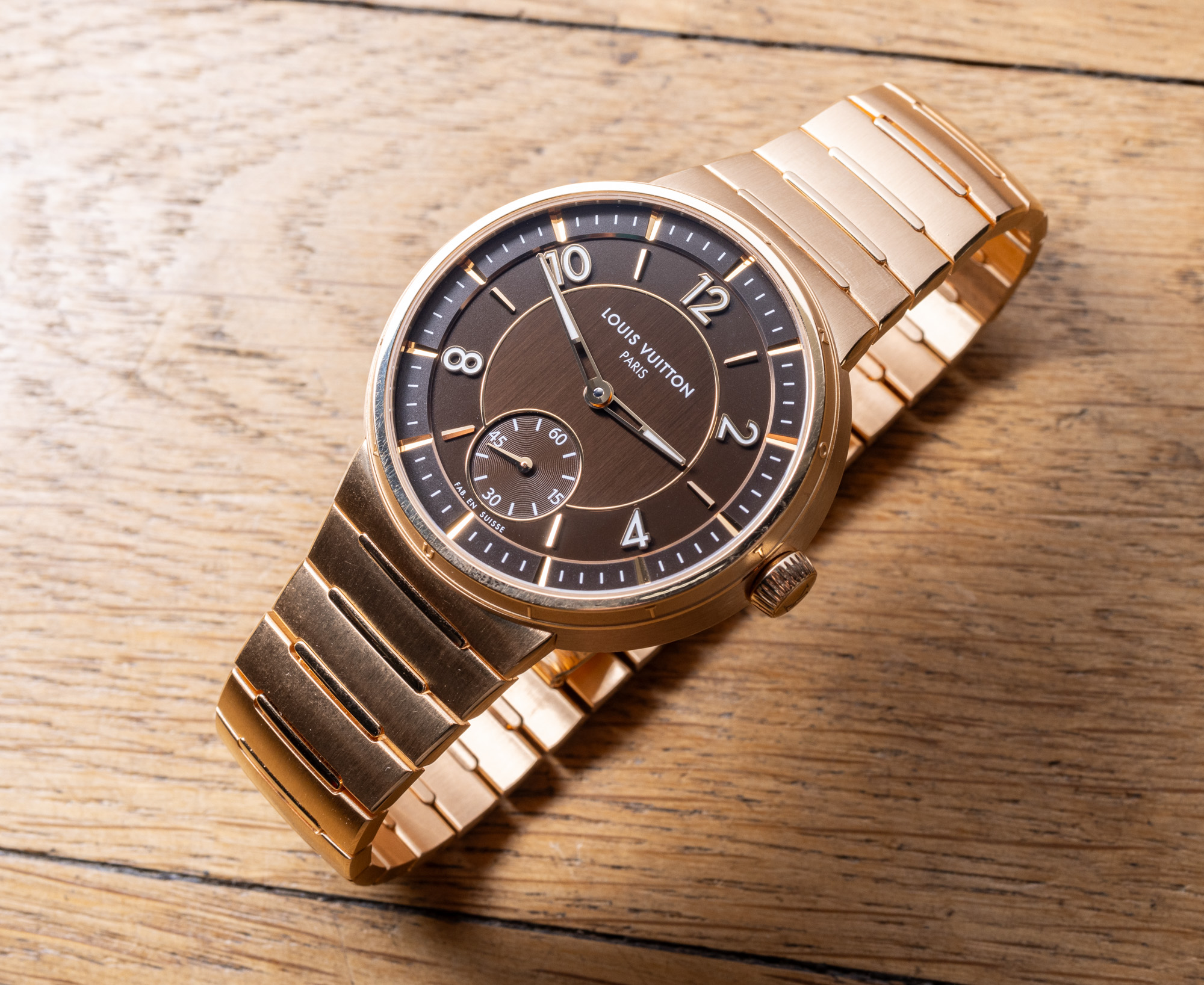
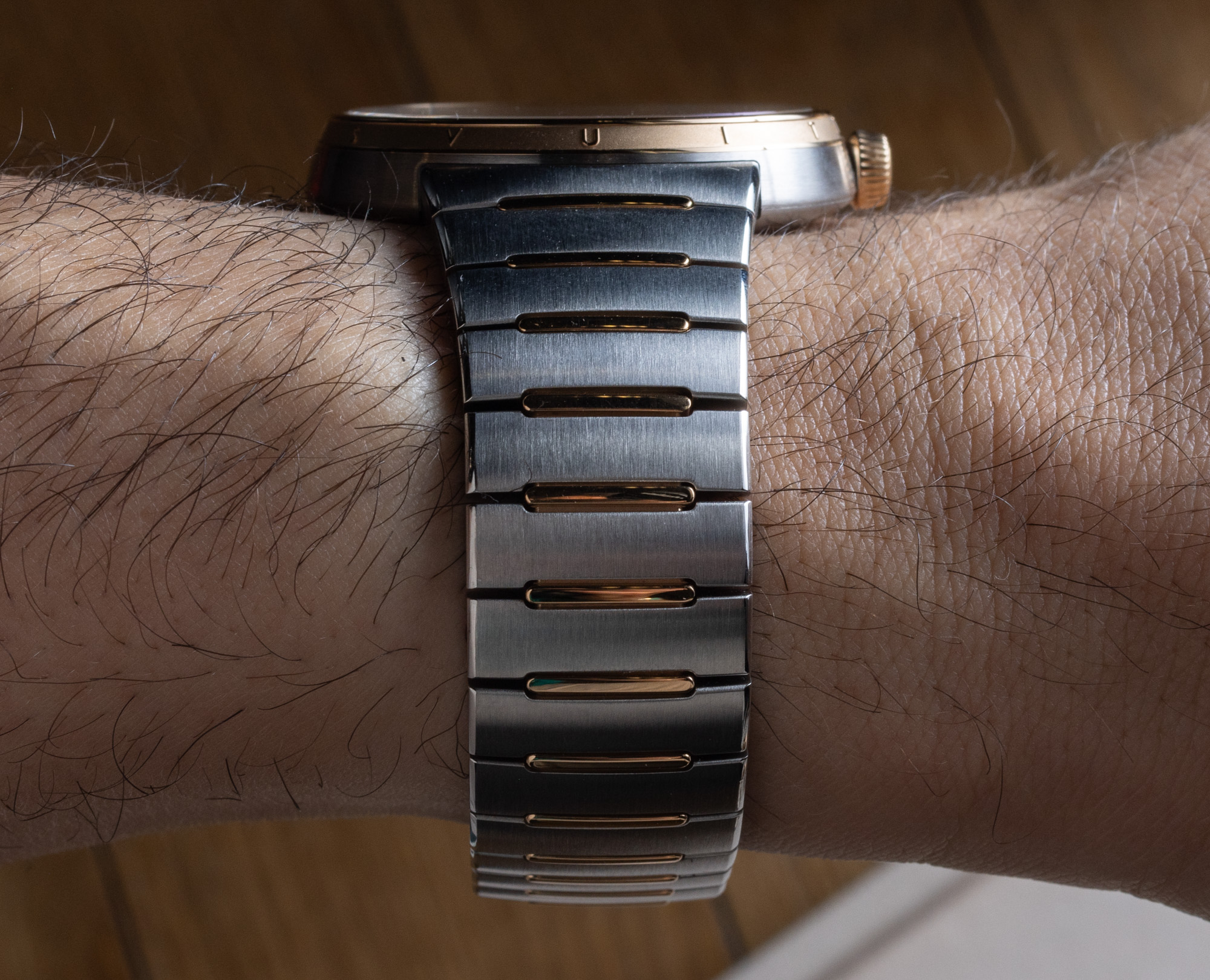 The Tambour watch dial is a masterpiece of surface finishing and using available space intelligently (in three dimensions mind you). The overall design feels like a lovely amalgamation of beautiful watch dials going back 100 years – with some production techniques I’ve never seen before. More impressive is the dial’s use of depth and negative space. Areas of the dial that are raised up, are compliment with areas with are recessed. Many of these small changes in level are flat and polished. These angle of where polished elements are used, allows for the dial to playfully catch the light, but in a way that does not reflect back at you causing legibility issues. It is very clever indeed and makes for a dial that is exceptionally interesting in how well it comes across when you examine it in detail. Louis Vuitton proves the value of the dial in demonstrating how good it looks in various colors – offering both popular tones such as blue, and more adventurous tones such as steel-on-steel as well as deep brown. A special mention to the subtle yet highly effective vertical brushing used to finish the center of the Tambour dial. Overall the dial feels full enough, and interesting enough, but never too cluttered or complicated. This was not an easy feat for the Louis Vuitton designers or La Fabrique du Temps production team to achieve.
The Tambour watch dial is a masterpiece of surface finishing and using available space intelligently (in three dimensions mind you). The overall design feels like a lovely amalgamation of beautiful watch dials going back 100 years – with some production techniques I’ve never seen before. More impressive is the dial’s use of depth and negative space. Areas of the dial that are raised up, are compliment with areas with are recessed. Many of these small changes in level are flat and polished. These angle of where polished elements are used, allows for the dial to playfully catch the light, but in a way that does not reflect back at you causing legibility issues. It is very clever indeed and makes for a dial that is exceptionally interesting in how well it comes across when you examine it in detail. Louis Vuitton proves the value of the dial in demonstrating how good it looks in various colors – offering both popular tones such as blue, and more adventurous tones such as steel-on-steel as well as deep brown. A special mention to the subtle yet highly effective vertical brushing used to finish the center of the Tambour dial. Overall the dial feels full enough, and interesting enough, but never too cluttered or complicated. This was not an easy feat for the Louis Vuitton designers or La Fabrique du Temps production team to achieve.
This design is also the first time a Louis Vuitton watch dial says “Paris” on it. If you notice, that dial also says (in abbreviated form to keep the text elegant and symmetrical) “Fabrique en Suisse.” Louis Vuitton needed to get this right because it is normally strange to put two place names on the same watch dial. Here I think they do a good job because it first reminds you that the product is from the house of Louis Vuitton which is headquartered in Paris, France, but also that this special craft product is made by specialists – who naturally are in Geneva, Switzerland. Thus, I think Louis Vuitton got the branding and product origination terminology on the dial correct.
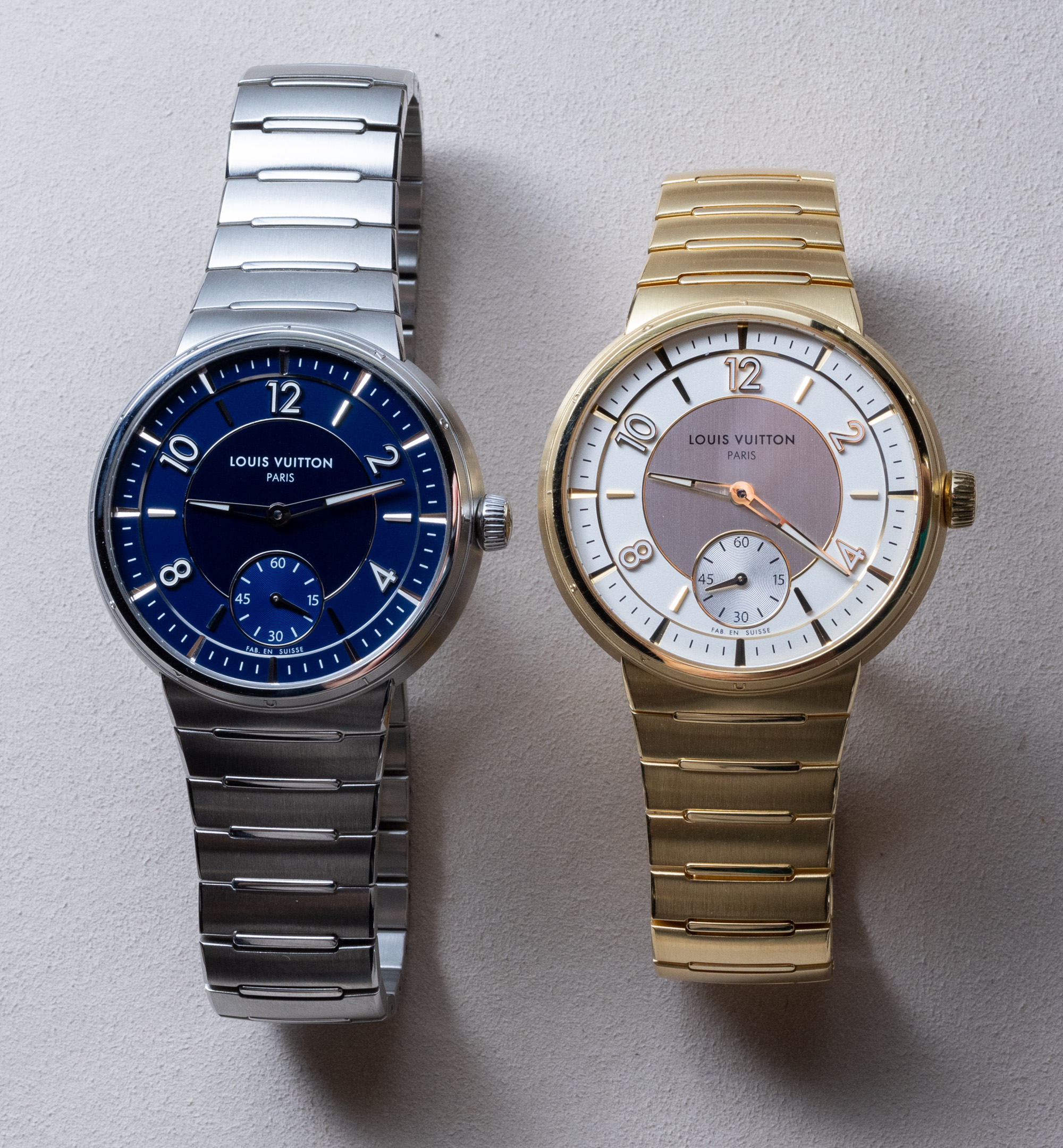
At launch, Louis Vuitton will focus on the two steel versions of the Tambour – being the silver-dialed reference W1ST10 and the blue-dialed reference W1ST20. Also available this year will be the two-tone Tambour with steel and 18k rose gold, as well as the all-18k yellow gold model with the silver dial and an 18k rose gold model with the deep brown dial (a personal favorite of mine). Louis Vuitton is apparently taking limited pre-orders now, with the new Tambour watches reported to start shipping in September 2023. People are really going to like these beautiful new Louis Vuitton daily-wear luxury lifestyle watches once they get to know them in person. This particular price point and timepiece style are highly competitive, but Louis Vuitton comes to the table with a desirable name, attractive product, and compelling story. Price for the Louis Vuitton Tambour in steel is 19,500 Euros. The two-tone steel and gold model is 28,000 Euros, and the 18k yellow or rose gold Tambour watches are 55,000 Euros. Learn more at the Louis Vuitton website here.

